Ask us anything
(about education).


Reading literature helps develop critical-thinking skills
When’s the last time you read a book? The chances you didn’t read one during the last year have radically increased.
For adults it’s roughly one in four — 24 percent according to the Pew Research Center. For my peers, youth, it’s about the same — 22 percent of 13-year-olds and 27 percent of 17-year-olds versus 8 percent and 9 percent, respectively, three decades ago according to the National Center for Education Statistics.

That’s especially unfortunate considering literature can help young adults develop important critical-thinking skills. For instance, U.S. News & World Report recently listed book clubs among five useful tools for developing critical-thinking skills before college.
“Students who read for understanding find it far easier to think critically than those who rush to finish,” writes the story’s author, Meghan Moll, a professional science, math, and ACT tutor with Varsity Tutors. “Analyzing a book requires you to delve deeper and ponder complex questions.”
My own experience with literature bears this out. In his best-selling novels “Jurassic Park” and “The Lost World,” Michael Crichton didn’t just take me on an entertaining roller-coaster ride. My favorite author reignited my childhood passion for prehistoric animals, sparked my intense interest in science, and continually fuels my own creativity.
His novels underscore the importance of critical thinking. “Jurassic Park” gave me a perspective on how humans interact with the biological world and what we can do to alter things — especially with genetic engineering. While the story line shows how people can use science to do beautiful things and change situations for the better, it also demonstrates how we can make devastating mistakes.
It’s probably no surprise that when my English teacher, Mrs. Hodgin, asked her classes at Moscow High School to participate in the Letters About Literature contest last year I wrote about the tangible, positive impact Dr. Crichton’s works have had on me. Sponsored by the Center for the Book in the Library of Congress, Letters About Literature encourages students in grades 4-12 to write a letter to an author — living or dead — whose book affected them personally.
I was the State of Idaho’s winner for Level 3 (grades 9-12) last year. The $100 gift card I won funded a hobby that’s kind of turning into a career — raising and researching ants. Thus, Dr. Crichton hasn’t just fueled my interest in the natural world — in a way he’s also helping fund my exploration of it.
The 2015-2016 Letters About Literature contest begins soon, and I encourage teachers and parents throughout Idaho to get their students involved. It’s an excellent project for classes and individual students.
The Center for the Book in the Library of Congress begins accepting entries Nov. 2. They must be postmarked by Dec. 4 for Level 3 (grades 9-12) or Jan. 11 for Level 2 (grades 7-8) and Level 1 (grades 4-6).
After the first two rounds of judging at the Library of Congress, the letters go through the next rounds back in their writers’ home states. The Idaho Commission for Libraries coordinates our local judging. Learn more about it online at http://libraries.idaho.gov/lal .
Meanwhile, if you, your child, or your students haven’t found a book that’s personally affected them, I urge you to resolve that. The benefits of literature are legion. Reading improves vocabulary, organizational skills, and the ability to read, comprehend, and analyze text. Plus, it can provide people with important historical perspective, encourage sympathy for other human beings, and promote appreciation for diversity and understanding of other cultures.
Moreover, literature can help students develop the critical-thinking skills many employers think are lacking in today’s college graduates before they even get to college.
Senior Miles Maxcer is the student council president at Moscow High School. He is currently reading a lot of nonfiction about leadership and different leaders while still conducting an independent study on ants. Read Miles’ winning letter at: http://libraries.idaho.gov/files/Level3WinnerMaxcer.pdf
Miles Maxcer
Republish this story on your website », get ednews in your inbox.
Weekly round up every Friday
Constitutional concerns hang over blockbuster facilities bill
Modern cte facilities will boost prospects in rural idaho, at the statehouse, a week marked by debates over diversity and racism, analysis: if the phoenix deal died wednesday, it didn’t die suddenly, statehouse roundup, 3.28.24: senate rejects summer lunch program funding, statehouse roundup, 3.27.24: senate kills phoenix bill, throwing purchase into jeopardy, trailer park: lawmakers pass competing bills to address four-day school issues, state investigation: special education violations come to light as parents advocate for students with disabilities, state investigation: systemic special education problems at oneida’s booming online school will take years to address.
- SUGGESTED TOPICS
- The Magazine
- Newsletters
- Managing Yourself
- Managing Teams
- Work-life Balance
- The Big Idea
- Data & Visuals
- Reading Lists
- Case Selections
- HBR Learning
- Topic Feeds
- Account Settings
- Email Preferences
The Case for Reading Fiction
- Christine Seifert

It’s an easy way to build emotional intelligence.
When it comes to reading, we may be assuming that reading for knowledge is the best reason to pick up a book. Research, however, suggests that reading fiction may provide far more important benefits than nonfiction. For example, reading fiction predicts increased social acuity and a sharper ability to comprehend other people’s motivations. Reading nonfiction might certainly be valuable for collecting knowledge, it does little to develop EQ, a far more elusive goal.
Some of the most valuable skills that managers look for in employees are often difficult to define, let alone evaluate or quantify: self-discipline, self-awareness, creative problem-solving, empathy, learning agility, adaptiveness, flexibility, positivity, rational judgment, generosity, and kindness, among others. How can you tell if your future employees have these skills? And if your current team is lacking them, how do you teach them? Recent research in neuroscience suggests that you might look to the library for solutions; reading literary fiction helps people develop empathy , theory of mind , and critical thinking .
- CS Christine Seifert is a professor of communication at Westminster College in Salt Lake City, Utah, where she teaches rhetoric, strategy, and professional writing
Partner Center

- LEARNING SKILLS
- Study Skills
- Critical Reading
Search SkillsYouNeed:
Learning Skills:
- A - Z List of Learning Skills
- What is Learning?
- Learning Approaches
- Learning Styles
- 8 Types of Learning Styles
- Understanding Your Preferences to Aid Learning
- Lifelong Learning
- Decisions to Make Before Applying to University
- Top Tips for Surviving Student Life
- Living Online: Education and Learning
- 8 Ways to Embrace Technology-Based Learning Approaches
- Critical Thinking Skills
- Critical Thinking and Fake News
- Understanding and Addressing Conspiracy Theories
- Critical Analysis
- Top Tips for Study
- Staying Motivated When Studying
- Student Budgeting and Economic Skills
- Getting Organised for Study
- Finding Time to Study
- Sources of Information
- Assessing Internet Information
- Using Apps to Support Study
- What is Theory?
- Styles of Writing
- Effective Reading
- Note-Taking from Reading
- Note-Taking for Verbal Exchanges
- Planning an Essay
- How to Write an Essay
- The Do’s and Don’ts of Essay Writing
- How to Write a Report
- Academic Referencing
- Assignment Finishing Touches
- Reflecting on Marked Work
- 6 Skills You Learn in School That You Use in Real Life
- Top 10 Tips on How to Study While Working
- Exam Skills
Get the SkillsYouNeed Study Skills eBook

Part of the Skills You Need Guide for Students .
- Writing a Dissertation or Thesis
- Research Methods
- Teaching, Coaching, Mentoring and Counselling
- Employability Skills for Graduates
Subscribe to our FREE newsletter and start improving your life in just 5 minutes a day.
You'll get our 5 free 'One Minute Life Skills' and our weekly newsletter.
We'll never share your email address and you can unsubscribe at any time.
Critical Reading and Reading Strategy
What is critical reading.
Reading critically does not, necessarily, mean being critical of what you read.
Both reading and thinking critically don’t mean being ‘ critical ’ about some idea, argument, or piece of writing - claiming that it is somehow faulty or flawed.
Critical reading means engaging in what you read by asking yourself questions such as, ‘ what is the author trying to say? ’ or ‘ what is the main argument being presented? ’
Critical reading involves presenting a reasoned argument that evaluates and analyses what you have read. Being critical, therefore - in an academic sense - means advancing your understanding , not dismissing and therefore closing off learning.
See also: Listening Types to learn about the importance of critical listening skills.
To read critically is to exercise your judgement about what you are reading – that is, not taking anything you read at face value.
When reading academic material you will be faced with the author’s interpretation and opinion. Different authors will, naturally, have different slants. You should always examine what you are reading critically and look for limitations, omissions, inconsistencies, oversights and arguments against what you are reading.
In academic circles, whilst you are a student, you will be expected to understand different viewpoints and make your own judgements based on what you have read.
Critical reading goes further than just being satisfied with what a text says, it also involves reflecting on what the text describes, and analysing what the text actually means, in the context of your studies.
As a critical reader you should reflect on:
- What the text says: after critically reading a piece you should be able to take notes, paraphrasing - in your own words - the key points.
- What the text describes: you should be confident that you have understood the text sufficiently to be able to use your own examples and compare and contrast with other writing on the subject in hand.
- Interpretation of the text: this means that you should be able to fully analyse the text and state a meaning for the text as a whole.
Critical reading means being able to reflect on what a text says, what it describes and what it means by scrutinising the style and structure of the writing, the language used as well as the content.
Critical Thinking is an Extension of Critical Reading
Thinking critically, in the academic sense, involves being open-minded - using judgement and discipline to process what you are learning about without letting your personal bias or opinion detract from the arguments.
Critical thinking involves being rational and aware of your own feelings on the subject – being able to reorganise your thoughts, prior knowledge and understanding to accommodate new ideas or viewpoints.
Critical reading and critical thinking are therefore the very foundations of true learning and personal development.
See our page: Critical Thinking for more.
Developing a Reading Strategy
You will, in formal learning situations, be required to read and critically think about a lot of information from different sources.
It is important therefore, that you not only learn to read critically but also efficiently.
The first step to efficient reading is to become selective.
If you cannot read all of the books on a recommended reading list, you need to find a way of selecting the best texts for you. To start with, you need to know what you are looking for. You can then examine the contents page and/or index of a book or journal to ascertain whether a chapter or article is worth pursuing further.
Once you have selected a suitable piece the next step is to speed-read.
Speed reading is also often referred to as skim-reading or scanning. Once you have identified a relevant piece of text, like a chapter in a book, you should scan the first few sentences of each paragraph to gain an overall impression of subject areas it covers. Scan-reading essentially means that you know what you are looking for, you identify the chapters or sections most relevant to you and ignore the rest.
When you speed-read you are not aiming to gain a full understanding of the arguments or topics raised in the text. It is simply a way of determining what the text is about.
When you find a relevant or interesting section you will need to slow your reading speed dramatically, allowing you to gain a more in-depth understanding of the arguments raised. Even when you slow your reading down it may well be necessary to read passages several times to gain a full understanding.
See also: Speed-Reading for Professionals .
Following SQ3R
SQ3R is a well-known strategy for reading. SQ3R can be applied to a whole range of reading purposes as it is flexible and takes into account the need to change reading speeds.
SQ3R is an acronym and stands for:
This relates to speed-reading, scanning and skimming the text. At this initial stage you will be attempting to gain the general gist of the material in question.
It is important that, before you begin to read, you have a question or set of questions that will guide you - why am I reading this? When you have a purpose to your reading you want to learn and retain certain information. Having questions changes reading from a passive to an active pursuit. Examples of possible questions include:
- What do I already know about this subject?
- How does this chapter relate to the assignment question?
- How can I relate what I read to my own experiences?
Now you will be ready for the main activity of reading. This involves careful consideration of the meaning of what the author is trying to convey and involves being critical as well as active.
Regardless of how interesting an article or chapter is, unless you make a concerted effort to recall what you have just read, you will forget a lot of the important points. Recalling from time to time allows you to focus upon the main points – which in turn aids concentration. Recalling gives you the chance to think about and assimilate what you have just read, keeping you active. A significant element in being active is to write down, in your own words, the key points.
The final step is to review the material that you have recalled in your notes. Did you understand the main principles of the argument? Did you identify all the main points? Are there any gaps? Do not take for granted that you have recalled everything you need correctly – review the text again to make sure and clarify.
Continue to: Effective Reading Critical Thinking
See also: Critical Analysis Writing a Dissertation Critical Thinking and Fake News
- Virtual Learning

How to Encourage Critical Thinking Skills While Reading: Effective Strategies
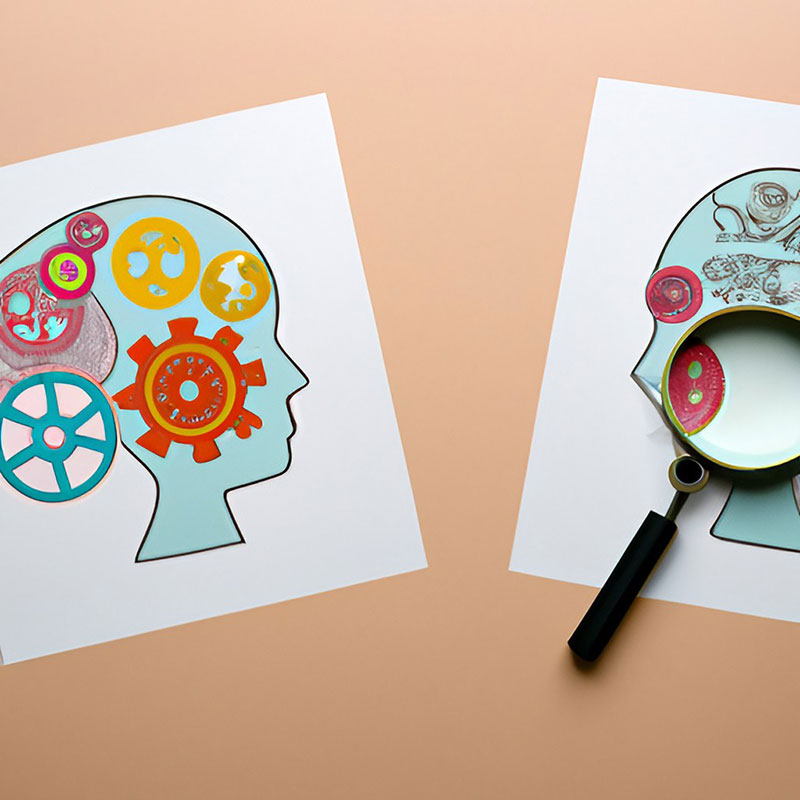
Encouraging critical thinking skills while reading is essential to children’s cognitive development. Critical thinking enables them to engage deeply with a topic or a book, fostering a better understanding of the material. It is a skill that does not develop overnight but can be nurtured through various strategies and experiences.
One effective way to cultivate critical thinking in children is by sharing quality books with them and participating in discussions that facilitate an exchange of ideas and opinions. Through these conversations, children can draw on their existing knowledge, problem-solving abilities, and experiences to expand their understanding of a subject.
Parents and teachers help kids think more deeply about things. They can do this by answering questions that help kids compare different ideas, look at things from different angles, guess what might happen, and develop new solutions.
Importance of Critical Thinking Skills in Reading
Critical thinking helps us understand what we read better. It helps us ask questions and think more deeply about the text. Critical thinking skills can help us analyze, evaluate, and understand what we read.
By incorporating critical thinking, readers can differentiate between facts and opinions, forming their views based on logical reasoning and evidence. This ability is particularly crucial in today’s information abundance, where readers are often exposed to biased or unreliable content. According to Critical Thinking Secrets , using critical thinking in reading allows learners to exercise their judgment in assessing the credibility of the information.
Furthermore, critical thinking promotes creativity and problem-solving skills. Practicing critical thinking allows learners to devise new and innovative ideas to address various challenges. This skill improves academic performance and prepares young minds for future professional endeavors.
Engaging with quality books and participating in thought-provoking discussions can nurture critical thinking abilities in children. Reading Rockets emphasizes the importance of exposing children to texts that challenge their thinking and encourage them to ask questions, fostering the development of critical thinking skills over time.
Teachers also play a significant role in promoting critical thinking in the classroom. Employing various instructional strategies, such as problem-based learning, asking open-ended questions, and providing opportunities for group discussions, can help students cultivate critical thinking habits.
Developing a Reading Environment That Fosters Critical Thinking
Creating a reading environment that promotes critical thinking enables students to engage with texts more deeply and develop essential analytical skills. The following sub-sections outline strategies for choosing thought-provoking materials and encouraging open discussions.
Choosing Thought-Provoking Materials
Selecting suitable reading materials is critical to stimulating critical thinking among students. Teachers should look for texts that:
- Are relevant and relatable to students’ lives and interests
- Present various perspectives and diverse characters
- Pose challenging questions and open-ended problems
By incorporating such texts into the classroom, students can be exposed to new ideas and viewpoints, promoting critical thinking and engagement with the material. For instance, in Eight Instructional Strategies for Promoting Critical Thinking , teachers are advised to choose compelling topics and maintain relevance to foster critical thinking
Encouraging Open Discussions
Fostering an environment where open discussions occur is essential to promoting critical thinking skills while reading. Teachers should:
- Create a culture of inquiry by posing open-ended questions and encouraging students to form opinions and debates
- Facilitate discussions by asking students to explain their thinking processes and share their interpretations of the text
- Respect all opinions and viewpoints, emphasizing that the goal is to learn from each other rather than reach a “correct” answer
Students who feel comfortable participating in discussions are more likely to develop critical thinking skills. The Reading Rockets emphasizes the importance of reading together and engaging in conversations to nurture critical thinking in children.
Active Reading Strategies
Active reading is an essential skill for encouraging critical thinking skills while reading. This involves consciously engaging with the material and connecting with what you know or have read before. This section discusses key strategies that can help you become an active reader.
Annotating and Note-Taking
Annotating the text and taking notes as you read allows you to engage with the material on a deeper level. This process of actively engaging with the text helps you to analyze and retain information more effectively. As you read, it is important to make marginal notes or comments to highlight key points and draw connections between different sections of the material.
Asking Questions While Reading
One important aspect of critical reading is questioning the material. This means not taking everything you read at face value and considering the author’s interpretation and opinion . As you read, develop the habit of asking questions throughout the process, such as:
- What is the author’s main argument?
- What evidence supports this argument?
- How is the information presented in a logical manner?
- What are the possible opposing viewpoints?
By asking questions, you can better understand the author’s viewpoint and the evidence presented, which helps to develop your critical thinking skills.
Summarizing and Paraphrasing
Summarizing and paraphrasing are essential skills for critical reading. Summarizing the material allows you to condense key points and process the information more easily. Paraphrasing, or rephrasing the ideas in your own words, not only helps you better understand the material, but also ensures that you’re accurately interpreting the author’s ideas.
Both summarizing and paraphrasing can enhance your critical thinking skills by compelling you to analyze the text and identify the main ideas and supporting evidence. This way, you can make informed judgments about the content, making your reading more purposeful and engaging.
Developing critical thinking skills while reading literature involves a comprehensive understanding of various literary devices. This section highlights three primary aspects of literary analysis: Recognizing Themes and Patterns, Analyzing Characters and Their Motivations, and Evaluating the Author’s Intent and Perspective.
Recognizing Themes and Patterns
One way to foster critical thinking is through recognizing themes and patterns in the text. Encourage students to identify recurring themes, symbols, and motifs as they read. Additionally, examining the relationships between different elements in the story can help create connections and analyze the overall meaning.
For example, in a story about the struggles of growing up, students might notice patterns in the protagonist’s journey, such as recurring conflicts or milestones. By contemplating these patterns, learners can engage in deeper analysis and interpretation of the text.
Analyzing Characters and Their Motivations
Character analysis is an essential aspect of literary analysis, as understanding characters’ motivations can lead to a thorough comprehension of the narrative. Encourage students to analyze the motives behind each character’s actions, focusing on the factors that drive their decisions.
For instance, in a novel where two characters have differing goals, have students consider why these goals differ and how the characters’ motivations impact the story’s outcome. This exploration can lead to thought-provoking discussions about human behavior, facilitating the development of critical thinking skills.
Evaluating the Author’s Intent and Perspective
Critical thinking is essential to evaluating the author’s intent and perspective. This process involves deciphering the underlying message or purpose of the text and analyzing how the author’s experiences or beliefs may have influenced their writing.
One strategy for accomplishing this is to examine the historical or cultural context in which the work was written. By considering the author’s background, students can better understand the ideas or arguments presented in the text.
For example, if reading a novel set during a significant historical period, like the Civil Rights Movement, understanding the author’s experience can help students analyze narrative elements, enhancing their critical thinking abilities.
Methods to Encourage Critical Thinking Beyond Reading
While reading is essential to developing critical thinking skills, it can be further enhanced by incorporating certain activities in daily routines that promote critical thinking.
Debates and Group Discussions
Debates and group discussions are excellent methods for encouraging critical thinking. By participating in debates or discussions, learners exchange diverse ideas, challenge each other’s reasoning, and evaluate the strength of their arguments. These activities require participants to think and respond quickly, synthesize information, and analyze multiple perspectives.
Teachers and parents can facilitate debates and group discussions by selecting topics that are relevant and related to the subject matter. Promoting respectful dialogue and modeling effective listening skills are also important aspects of setting up successful debates or discussions.
Exploring Other Media Formats
In addition to reading, exploring other media formats like documentaries, podcasts, and videos can help stimulate critical thinking in learners. Different mediums present information in unique ways, providing learners with various perspectives and fostering a more comprehensive understanding of the topic.
Using diverse media formats, individuals can compare and contrast information, question what they know, and further develop their analytical skills. It is essential that educators and parents encourage learners to explore these formats critically, assessing the credibility of the sources and ensuring accuracy in the information consumed.
Assessing Progress and Providing Feedback
Developing critical thinking skills while reading requires continuous assessment and feedback. Monitoring students’ progress in this area and providing constructive feedback can help ensure development and success.
Setting Measurable Goals
Establishing clear, measurable goals for critical thinking is vital for both students and educators. These goals should be specific, achievable, and time-bound. To effectively assess progress, consider using a variety of assessments, such as:
- Classroom discussions
- Reflective writing assignments
- Group projects
- Individual presentations
These different assessment methods can help determine if students are reaching their critical thinking goals and guide educators in adjusting their instruction as needed.
Providing Constructive Feedback
Constructive feedback is essential for students to improve their critical thinking skills. When providing feedback, consider the following guidelines:
- Be specific and focused on the critical thinking aspects of students’ work
- Link feedback directly to the established goals and criteria
- Encourage self-assessment and reflection
- Highlight strengths and areas for improvement
- Offer realistic suggestions for improvement
By implementing these strategies, educators can ensure that students receive the necessary support and guidance to develop their critical thinking skills while reading.

- Why The Reading Ranch?
- About the Director
- General Information
- Summer 2022 Schedule
- Pre-6th Grade Schedules
- Pre-K Programs
Want to create or adapt books like this? Learn more about how Pressbooks supports open publishing practices.
2 – Critical Reading

“Citizens of modern societies must be good readers to be successful. Reading skills do not guarantee success for anyone, but success is much harder to come by without being a skilled reader. The advent of the computer and the Internet does nothing to change this fact about reading. If anything, electronic communication only increases the need for effective reading skills and strategies as we try to cope with the large quantities of information made available to us.” –William Grabe
The importance of reading as a literacy skill is without a doubt. It is essential for daily life navigation and academic success. Reading for daily life navigation is relatively easier, compared to academic reading. Think about the kinds of reading you did in elementary and high school (e.g., story books, picture books, textbook chapters, literary works, online information, lecture notes, etc.).
Now think about what you were expected to do with your reading at school (e.g., memorize, summarize, discuss, pass a test, apply information, or write essays or papers).
Research shows that what you expect to do with a text affects how you read it.
–Bartholomae & Petrosky (1996)
So, reading is not always the same; you read school texts differently than the texts you choose outside of school tasks. Furthermore, there are many external and internal factors that influence how you interpret and use what you read. Much depends on your background (e.g., cultural participation in communities, identity, historical knowledge), and the context in which you are reading. Classrooms and teachers certainly have an influence. The teaching methods used by your instructor, the texts your instructor chooses, and expectations of student performance on assignments all affect how you read and what you do to accomplish an assignment.
Different levels of education also emphasize different types of reading. For example, in primary or secondary education, you learn what is known, so you focus on correctness, memorization of facts, and application of facts. In higher education, although you might still be required to understand and memorize information, you expand what is known by examining ideas and creating new knowledge. In those processes at different levels, reading has been used for different purposes.
Multilingual reading and writing expert William Grabe has identified six different purposes:
- Reading to search for information (scanning and skimming)
- Reading for quick understanding (skimming)
- Reading to learn
- Reading to integrate information
- Reading to evaluate, critique, and use information
- Reading for general comprehension (in many cases, reading for interest or reading to entertain)
In college, reading to evaluate, critique, and use information is the most practiced and tested skill. But what does it mean? Reading to evaluate, critique, and use information is related to critical reading.
Definition of Critical Reading
Critical reading is a more ACTIVE way of reading. It is a deeper and more complex engagement with a text. Critical reading is a process of analyzing, interpreting and, sometimes, evaluating. When we read critically, we use our critical thinking skills to QUESTION both the text and our own reading of it. Different disciplines may have distinctive modes of critical reading (scientific, philosophical, literary, etc).
[Source: Duncan , n.d., Critical Reading ]
Critical reading does not have to be all negative. The aim of critical reading is not to find fault but to assess the strength of the evidence and the argument. It is just as useful to conclude that a study, or an article, presents very strong evidence and a well-reasoned argument, as it is to identify the studies or articles that are weak.
[Source: What is critical reading? ]
There’s No Reason to Eat Animals by Lindsay Rajt
If we care about the environment and believe that kindness is a virtue-as we all say that we do–a vegan diet is the only sensible option. The question becomes: Why eat animals at all?
Animals are made of flesh, bone, and blood, just as you and I are. They form friendships, feel pain and joy, grieve for lost loved ones and are afraid to die. One cannot profess to care about animals while tearing them away from their friends and families and cutting their throats–or paying someone else to do it–simply to satisfy a fleeting taste for flesh.
[adapted from Pattison, 2015, Critical Reading: English for Academic Purposes for instructional purposes ]
What is your position on the issue?
Do you think that the language used helps the audience? How?
How does the language use affect your evaluation of the issue?
Obesity: A Public Health Failure? By Tavis Glassman PhD, MPH, MCHES, Jennifer Glassman M.A., CCC-SLP, and Aaron J. Diehr, M.A.
Obesity rates continue to increase, bringing into question the efficacy of prevention and treatment efforts. While intuitively appealing, the law on weight gain focusing on calories is too simplistic because calories represent only one factor on issues of weight management. From a historical perspective, the recommendation to eat a low fat, high carbohydrate diet may have been the wrong message to promote, thereby making the obesity situation worse. Suggestions to solve the issues of obesity include taxing, restricting advertising, and reducing the use of sugar. Communities must employ these and other strategies to decrease sugar use and reduce obesity rates.
How would you describe the authors’ educational background?
How does the authors’ background affect your evaluation of the argument?
Students Want More Mobile Devices in Classroom by Ellis Booker
Released last week, the Student Mobile Device Survey reveals that students almost unanimously believe mobile technology will change education and make learning more fun. The survey, which collected the responses of 2,350 US students, was conducted for learning company Pearson by Harris Interactive.
According to the survey, 92% of elementary, middle and high school students believe mobile devices will change the way students learn in the future and make learning more fun (90%). A majority (69%) would like to use mobile devices more in the classroom.
The survey results also contained some surprises. For example, college students in math and science are much more likely to use technology for learning, and researchers expected to see this same pattern in the lower grades.
Are you convinced by the survey results? Why?
Color Scheme Associations in Context
The colors you surround yourself with at work are also important as they make a difference in how you are perceived by members of the public. Traditional workplaces still use dark colors such as navy blue, forest green, and chocolate brown to give clients a sense of seriousness and professionalism.
Think about it: which accountant would you choose to prepare your tax return: the one whose office has navy blue drapes and lamps and a maritime scene on the wall or the one whose office is painted in hot pink with a cartoon character on the wall? An online survey of lawyers carried out by Legal Scene magazine showed that of 287 respondents, 38 percent chose a navy blue color scheme for their office; 32 percent chose brown; 19 percent chose forest green; 7 percent chose burgundy; and only 4 percent chose red, pink or orange (Perkins, 2013).
What kind of bias might be implicated in this survey?
What is your personal experience?
These practices do not ask you to memorize or summarize the information you read, but instead, they ask you to provide your opinions and judgment. To answer those questions, you need to engage in critical reading, a form of active reading.
Active reading, which predominates college-level reading, means reading with the purpose of getting a deeper understanding of the texts you are reading and being engaged in the actions of analyzing, questioning, and evaluating the texts. In other words, instead of accepting the information given to you, you challenge its value by examining the source of the information and the formation of an argument.
The difference in how you read falls into two broad categories:
(Source: Reading Critically ]
Reading critically and actively is essential for college students. But what does critical reading look like in actual practice? Here are the steps that you can follow to do the critical reading.
Step 1: Understand the purpose of your reading and be selective
As college students, you are very busy with your daily coursework. A freshman usually takes four to five courses or even six courses per semester. This means you have tons of reading to do every week. Getting to know the purpose of the reading assignments can save you time as your reading is more targeted. Remember you do not have to read a whole chapter or book. What you can do is through scanning to determine the sections that are useful for you and then read the parts carefully.
Step 2: Evaluate the reading text
While reading a text, you need to question/analyze/evaluate the text by considering the following:
- Assess whether a source is reliable (Read around the text for the title, author, publisher, publication date, good/bad examples, tones, etc.)
- Distinguish between facts and opinions (Scan for any evidence)
- Recognize multiple opinions in a text
- Infer meaning when it is not directly stated
- Agree or disagree with what you read
- Consider the relevance of the text to your task
- Consider what is missing from a text
It may well be necessary to read passages several times to gain a full understanding of texts and be able to evaluate the source. In this process, you can underline, highlight, or circle important parts and points, take notes, or add comments in the margins.
Critical reading often involves re-reading a text multiple times, putting our focus on different aspects of the text. The first time we read a text, we may be focused on getting an overall sense of the information the author is presenting – in other words, simply understanding what they are trying to say. On subsequent readings, however, we can focus on how the author presents that information, the kinds of evidence they provide to support their arguments (and how convincing we find that evidence), the connection between their evidence and their conclusions, etc.
[Source: Lane, 2021, Critical Thinking for Critical Writing ]
Step 3: Document your reading and form your own argument
After you finish reading a text, sort out your notes and keep track of the sources you have read on the topic you are exploring. After you read several sources, you might be able to form your own argument(s) and use the sources as evidence for your argument(s).
In college, critical reading usually leads to critical writing.
Critical writing comes from critical reading. Whenever you have to write a paper, you have to reflect on various written texts, think and interpret research that has previously been carried out on your subject. With the aim of writing your independent analysis of the subject, you have to critically read sources and use them suitably to formulate your argument. The interpretations and conclusions you derive from the literature you read are the stepping stones towards devising your own approach.
[Source: Does Critical Reading Influence Academic Writing? ]
In a word, through critical reading, you form your own argument(s), and the evidence used to support your argument(s) is usually from the texts that you read critically. The Source Essay Writing Service explains how critical reading influences academic writing.
How does critical reading influence your writing skills?
Once you start reading texts critically, you develop an understanding of how to write research papers. Here are some practical tips that will help you in academic writing:
- Examine introductions and conclusions of the texts while critical reading so when you write an independent content, you would be able to decide how to focus your critical work.
- When you highlight or take notes from a text, make sure you focus on the argument. The way the author explains the analytical progress, the concepts used, and arriving at conclusions will help you to write your own facts and examples in an interesting way.
- By closely reading the texts, you will be able to look for the patterns that give meaning, purpose, and consistency to the text. The way the arguments are presented in paragraphs will aid you in structuring information in your writing.
- When you critically read a text, you are able to learn how an argument is placed in the text. Try to understand how you can use this placement strategy in academic writing. Paying attention to the context is an important aspect that you learn from critical reading.
- While reading a text, you will notice that the author has given the due credit to the sources used or the references that were consulted. This will help you in understanding how you can cite sources and quotes in your content.
- Critical reading skills enhance your way of thinking and writing skills. The more you read, the better is your knowledge and vocabulary. It is important to use the precise words to express your meaning. You can learn new words and improve your writing by reading as many texts as you can.
Activity 1: Discuss the following questions with your group
- A website from the United Nations Educational, Scientific ad Cultural Organization (UNESCO) gives some statistics about the level of education reached by young women in Indonesia. Is this a reliable source?
- You find an interesting article about addiction to online gambling. The article has some interesting statistics, but it was published ten years ago. Is it worth using?
- You find a book about World War II that presents a different opinion from your other sources. What would you like to know about the author before you decide whether or not to take him seriously?
- An article tells you that research into space exploration is a waste of money. Do you think this article is presenting facts or opinions? How can you tell? What might you look for in the article?
- You find some research that states that people who own dogs generally live longer lives than those who do not. The author has some convincing arguments, but you are not sure whether or not she has enough evidence. How mush is enough?
- A newspaper article tells you about human rights abuses in a certain country. The writer of this article has never visited the country in question; his claims are based on interviews with other people. How would you evaluate his information?
- You find two websites about the use of seaweed as a source of energy. One is full of long words and complicated sentences; the other uses simple, clear language. Is the first one a more reliable source?
- You have read nine different articles that tell you that there is no connection between wealth and happiness. The tenth article gives the opposite opinion: rich people are happier than those who are poor. What questions would you ask yourself about this article before you decide whether or not to consider it?
Activity 2: Reading for analyzing styles
Please read the news and discuss the importance of the graphs in supporting the arguments of the text.
Gender Pay Gap in U.S. Held Steady in 2020
By amanda barroso and anna brown.
The gender gap in pay has remained relatively stable in the United States over the past 15 years or so. In 2020, women earned 84% of what men earned, according to a Pew Research Center analysis of median hourly earnings of both full- and part-time workers. Based on this estimate, it would take an extra 42 days of work for women to earn what men did in 2020.
As has been the case in recent decades, the 2020 wage gap was smaller for workers ages 25 to 34 than for all workers 16 and older. Women ages 25 to 34 earned 93 cents for every dollar a man in the same age group earned on average. In 1980, women ages 25 to 34 earned 33 cents less than their male counterparts, compared with 7 cents in 2020. The estimated 16-cent gender pay gap among all workers in 2020 was down from 36 cents in 1980.
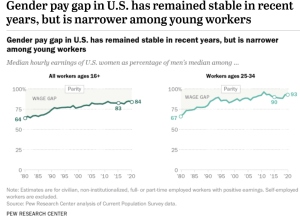
The U.S. Census Bureau has also analyzed the gender pay gap, though its analysis looks only at full-time workers (as opposed to full- and part-time workers). In 2019, full-time, year-round working women earned 82% of what their male counterparts earned, according to the Census Bureau’s most recent analysis.
Why does a gender pay gap still persist?
Much of this gap has been explained by measurable factors such as educational attainment, occupational segregation and work experience. The narrowing of the gap is attributable in large part to gains women have made in each of these dimensions.
Even though women have increased their presence in higher-paying jobs traditionally dominated by men, such as professional and managerial positions, women as a whole continue to be over-represented in lower-paying occupations relative to their share of the workforce. This may contribute to gender differences in pay.
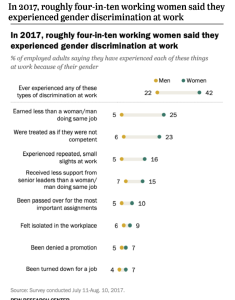
Other factors that are difficult to measure, including gender discrimination, may also contribute to the ongoing wage discrepancy. In a 2017 Pew Research Center survey , about four-in-ten working women (42%) said they had experienced gender discrimination at work, compared with about two-in-ten men (22%). One of the most commonly reported forms of discrimination focused on earnings inequality. One-in-four employed women said they had earned less than a man who was doing the same job; just 5% of men said they had earned less than a woman doing the same job.
Motherhood can also lead to interruptions in women’s career paths and have an impact on long-term earnings. Our 2016 survey of workers who had taken parental, family or medical leave in the two years prior to the survey found that mothers typically take more time off than fathers after birth or adoption. The median length of leave among mothers after the birth or adoption of their child was 11 weeks, compared with one week for fathers. About half (47%) of mothers who took time off from work in the two years after birth or adoption took off 12 weeks or more.
Mothers were also nearly twice as likely as fathers to say taking time off had a negative impact on their job or career. Among those who took leave from work in the two years following the birth or adoption of their child, 25% of women said this had a negative impact at work, compared with 13% of men.

[Source: https://www.pewresearch.org/fact-tank/2021/05/25/gender-pay-gap-facts/ ]
Activity 3: Reading for arguments
What’s the main argument of the poem?
Fire and Ice
By robert frost, some say the world will end in fire, some say in ice. from what i’ve tasted of desire i hold with those who favor fire. but if it had to perish twice, i think i know enough of hate to say that for destruction ice is also great and would suffice..
References:
Barroso, A., & Brown, A. (2021, May 25). Gender pay gap in U.S. held steady in 2020. Pew Research Center. Retrieved July 22, 2022, from https://www.pewresearch.org/fact-tank/2021/05/25/gender-pay-gap-facts/
Bartholomae, D., Petrosky, T., & Waite, S. (2002). Ways of reading: An anthology for writers (p. 720). Bedford/St. Martin’s.
Duncan, J. (n.d.). The Writing Centre, University of Toronto Scarborough. Modified by Michael O’Connor. https://www.stetson.edu/other/writing-program/media/CRITICAL%20READING.pdf
Grabe, W. (2008). Reading in a second language: Moving from theory to practice. Cambridge University Press.
Lane, J. (2021, July 9). Critical thinking for critical writing. Simon Fraser University. Retrieved July 22, 2022, from https://www.lib.sfu.ca/about/branches-depts/slc/writing/argumentation/critical-thinking-writing
Pattison, T. (2015). Critical Reading: English for academic purposes for instructional purposes. Pearson.
Sourceessay. (n.d.). What is critical reading. https://sourceessay.com/does-critical-reading-influence-academic-writing/
University of Leicester. (n.d.). What is critical reading? Bangor University. https://www.bangor.ac.uk/studyskills/study-guides/critical-reading.php.en
Critical Reading, Writing, and Thinking Copyright © 2022 by Zhenjie Weng, Josh Burlile, Karen Macbeth is licensed under a Creative Commons Attribution 4.0 International License , except where otherwise noted.
Share This Book

How Reading Improves Critical Thinking - The Happy Hollisters
- How Reading Improves Critical Thinking
Reading for Critical Thinking
Critical thinking is an important skill for children to develop as they grow. Good critical thinking skills can be attained in a variety of ways. Reading mystery books is one way; books supply a landscape in which children can develop critical thinking skills simply by enjoying the story and then discussing and analyzing it with others.
Types of Books that Produce Critical Thinkers

Books that are best for creating critical thinkers are, surprisingly, fictional stories. Because fiction is more of an art form, it leads children down paths that they are left to invent a large part of themselves. To truly get the total feel and setting for a book of fiction, readers must consider the inferences and symbolism within the story, which involves a much deeper level of thinking than nonfiction. The Happy Hollisters by Jerry West is a fictional mystery set of 33 books for young readers. Each book guides the reader through an elaborate maze of fun characters and clues, prompting them to solve the mystery before the end of the book. They are involved in the detective process from beginning to end of each book, from uncovering the mystery to collecting the clues and coming to a solution at the end. This process of engaging readers adds to the value of these books when it comes to reading for critical thinking.
How Can Parents Add to Critical Thinking Skills
Parents can start off by choosing appropriate books for their children to read. The Happy Hollisters series is a great starting point for children who enjoy reading a great story and for parents who want to strengthen their child’s critical thinking skills. Family reading time, even if it is quiet time, is still quality time spent together. At the end of their reading sessions, parents get a feel for what their children understand from the book and guide them to think a bit more about what they have read, for example, talking about the clues that the children have found so far, what they could mean individually, and what they could all mean when pieced together. This helps a child to realize that multiple levels of thinking are possible. Taking the clues and learning to combine the reasons as to how they could be important is learning critical thinking through reading.
Reading for critical thinking is beneficial for children. The Happy Hollisters book series is a fun educational tool that the whole family can enjoy together and develop their critical thinking skills at the same time. Integrating time to read for critical thinking is important for all children, and all participating family members will benefit from it.
The Power of Reading: How It Can Improve Your Critical Thinking Skills

The Benefits of Reading for Critical Thinking
How reading helps to enhance critical thinking, the power of reading for personal growth, integrating reading into your daily routine.

- Why Choose Us?
- Current Courses
- Book Online Tuition
- School Partnerships
- Join Our Team

- Resource Hub Home
- Our Website
- Parent Zone
- Student Zone
- Teacher Zone
Reading Widely to Develop Critical Thinking Skills

As a literature specialist, I read as much as I can, and find that I’m constantly learning about and from the texts I encounter. Reading engages our minds in ways that nothing else can, and it not only provides us with knowledge but also challenges us to think in new ways.
Significantly, reading develops the critical thinking skills that are essential to success in a wide range of areas: skills of analysis, interpretation, and of being able to create an argument and explain it. This is why it’s essential to read often and widely. Take a look at some of the ways wide reading can develop your critical thinking:
Reading improves vocabulary and language skills . You will become aware of the techniques used by good writers and learn new words and their connotations. This will help develop your own command of language both when you write and when you have to explain things verbally. You will find that you have a new ability to analyse, explain, and persuade!
Every good story has a problem. Problem solving is at the heart of critical thinking, and when you read, you will see how characters solve the problems they face. You will also be thinking about a character’s problem, and possible solutions before you find out what the character does. When you engage with a story, you will start to make predictions based on the information you have been given. You will find yourself looking for clues and pieces of evidence you can use to solve the puzzle, and you will be able to apply these problem-solving skills to the tasks and problems you encounter at school and in your everyday life.
Use your imagination. Reading forces you to imagine the world of the story: what the landscape and characters look like, what their thoughts are and how they interact with other characters and their world. If you read a book rather than watching the movie, you will have to form your own version of the writer’s world based on the language they use.
Grow your knowledge base and develop areas of interest . If you read widely, you can learn about new subjects or learn more within an existing area of interest. You won’t only learn facts and information, but wide reading will improve your organisational skills (you will learn how a complex text is organized and how to navigate it) and your ability to comprehend and analyse a text you haven’t seen before. You will be able to apply what you learn to other questions you face and use your new skills to understand other books you read.
To get started, why not talk to your Seven Springs Education tutor about your interests? They can help you with some reading recommendations. I often do this with my students. If you enjoy the Percy Jackson series, you might want to read further tales of mythology and fantasy, for example Aru Shah and the End of Time by Roshani Chokshi, or The Jumbies by Tracey Baptiste. Or you could try something different in a genre you wouldn’t usually read. Perhaps you could start with a mystery story such as Chasing Vermeer by Blue Balliett, or Robert Westall’s The Watchtower , which is both a mystery story and a ghost story. The important thing to remember is to read what you enjoy and pursue your interests, but don’t forget to challenge yourself sometimes by trying something different.
It is important not to think of critical thinking as a natural gift that we either have or we don’t, but as an ability that we can train, develop, and improve. Reading widely will definitely help with this and will give you the skills you need to think clearly and rationally in order to solve all kinds of problems.
World Book Day 2024
What to read this march (for secondary students), what to read this march (for primary students), subscribe to our newsletter.

Academic Skills Center: Critical Reading
- Academic Skills Center
- Accounting and Finance
- College Math
- Self-Paced Modules
- About Us Home
- Administrative Staff
- Social Change
- Peer Mentors Home
- Peer Live Events
- Meet the Peer Mentors
- Microsoft Office
- Microsoft Word
- Microsoft PowerPoint
- Statistics Skills in Microsoft Excel
- Capstone Formatting
- MS Peer Tutoring
- Course-Level Statistics
- Statistics Tutoring
- Strengthen Your Statistics Skills
- HUMN 8304 Resources
- Statistics Resources
- SPSS and NVivo
- Success Strategies Home
- Time Management
- School-Life Balance
- Learning Strategies
- Critical Reading
- Communication
- Doctoral Capstone and Residency
- Classroom Skills
- Beyond the Classroom
- Mindset and Wellness
- Self-Care and Wellness
- Grit and Resilience
- SMART Goals
- Diversity and Inclusion
- Savvy Student Blog
- Redirected_Residency
- Redirected_Undergraduate Peer Mentors
- Redirected_Doctoral Peer Mentors
- Redirected_Technology Skills
- Course Resources
- Reading Skills (old)
- Previous Page: Learning Strategies
- Next Page: Communication
Reading Self-Paced Modules
Reading Textbooks Reading Articles
Reading Skills Part 1: Set Yourself Up for Success
"While - like many of us - I enjoy reading what I want to read, I still struggle to get through a dense research article or textbook chapter. I have noticed, however, that if I take steps to prepare, I am much more likely to persist through a challenging reading. "
Reading Skills Part 2: Alternatives to Highlighting
"It starts with the best of intentions: trusty highlighter in hand or (for the tech-savvy crowd) highlighting tool hovering on-screen, you work your way through an assigned reading, marking only the most important information—or so you think."
Reading Skills Part 3: Read to Remember
"It’s happened to the best of us: on Monday evening, you congratulate yourself on making it though an especially challenging reading. What a productive start to the week!"
Reading a Research Article Assigned as Coursework
"Reading skills are vital to your success at Walden. The kind of reading you do during your degree program will vary, but most of it will involve reading journal articles based on primary research."
Critical Reading for Evaluation
"Whereas analysis involves noticing, evaluation requires the reader to make a judgment about the text’s strengths and weaknesses. Many students are not confident in their ability to assess what they are reading."
Critical Reading for Analysis and Comparison
"Critical reading generally refers to reading in a scholarly context, with an eye toward identifying a text or author’s viewpoints, arguments, evidence, potential biases, and conclusions."
Pre-Reading Strategies
Triple entry notebook, critical thinking.
Use this checklist to practice critical thinking while reading an article, watching an advertisement, or making an important purchase or voting decision.
Critical Reading Checklist (Word) Critical Reading Checklist (PDF) Critical Thinking Bookmark (PDF)
Walden's Online Bookstore
Go to Walden's Online Bookstore
Hillary Wentworth on SKIL Grad Writing Courses, Critical Reading, & Online Etiquette
All the Skills You Need to Succeed.
- Office of Student Disability Services
Walden Resources
Departments.
- Academic Residencies
- Academic Skills
- Career Planning and Development
- Customer Care Team
- Field Experience
- Military Services
- Student Success Advising
- Writing Skills
Centers and Offices
- Center for Social Change
- Office of Academic Support and Instructional Services
- Office of Degree Acceleration
- Office of Research and Doctoral Services
- Office of Student Affairs
Student Resources
- Doctoral Writing Assessment
- Form & Style Review
- Quick Answers
- ScholarWorks
- SKIL Courses and Workshops
- Walden Bookstore
- Walden Catalog & Student Handbook
- Student Safety/Title IX
- Legal & Consumer Information
- Website Terms and Conditions
- Cookie Policy
- Accessibility
- Accreditation
- State Authorization
- Net Price Calculator
- Contact Walden
Walden University is a member of Adtalem Global Education, Inc. www.adtalem.com Walden University is certified to operate by SCHEV © 2024 Walden University LLC. All rights reserved.

- Choosing Effective Vocabulary
- How to Fill a Page (When You Have Nothing to Say)
- Resources – Books
- Critical Thinking and Reading Skills
- Key Terms and the Inference Continuum
- Bad Inferences – Fallacies and Biases
- Application: Inferences and History
- An Aside: Strong Inferences vs. Ghosts
- Eight Types of Evidence – Strengths and Weaknesses
- Bad Evidence – Fallacies and Poor Appeals
- Value Conflicts and Key Terms
- Tragic Application of Values
- Common Value Systems
- Fallacies and a Few Fun Techniques
- Donna Hicks’s Essential Elements of Dignity
- Fundamental Needs
- Mapping Classroom Culture – Support and Humiliation
- The Dignity Pledge
- Separation and Segregation
- Stripping Away Resources and Protections
- Violence and Intimidation
- Murder and Elimination
- Toxic Mythologies and Deep Narratives
- Scapegoating and Conspiracy Theories
- Caricature and Stereotypes
- Denial and Willful Ignorance
- Conclusion and FAQs
Share this:
Leave a comment cancel reply.
- Search for:

- Copy shortlink
- Report this content
- Manage subscriptions

teaching Critical Thinking Through Read Alouds
Michael dunlea.

For 18 years I have worked with some of the youngest learners — emerging readers. In just my second year as a teacher I was assigned the inclusion 2nd-grade classroom, working with children who are 7-years old and have learning differences. It pushed me to find new ways to help them embrace critical thinking.
Too often, we think that the only goal with students like these should be getting up to speed on basic skills. That’s important of course, but, it shouldn’t exclude teaching higher level thinking skills that can help reinforce basic skills. It’s not “either-or”; it’s “both-and.” Working with the Reboot Foundation , a non-profit organization dedicated to improving instruction for all students, I was recently asked to focus on how we specifically target these skills for younger learners. Teachers from all subjects and content areas collaborated on a Teachers’ Guide to Critical Thinking in order to find universal ways all educators could reach their students across the disciplines and grades.
One advantage to the earlier grades is that we typically teach our students all, or almost all, subjects. So when I model skills or abilities in one area, I can refer to them across the curriculum. What is taught in reading , for example, can easily be applied to math .
One of the best ways I’ve found to help my students develop the critical thinking skills they need to be successful may come as a surprise: reading chapter books aloud to my class. So much can be modeled and, if done correctly, leads to high student engagement.
Why are read-alouds important? Reading aloud externalizes the activity so that both students and teachers can “see” it better. The words become more alive for students, and they get the satisfaction of actualizing and hearing their progress in realtime. Teachers, meanwhile, get a clear sample of where their students are at in their comprehension, who needs extra help, and what class-wide instruction may be needed. Finally, read-alouds are important because they provide ample opportunity for teachers to stop the class and probe them to think more deeply about a given passage. Here are a few examples of this strategy at work. Here are a few examples of this strategy.
Each year I read “The Cricket in Times Square” to my students. This story centers around a cricket who is accidentally transported from the Connecticut countryside into the subway station at Times Square, New York City. One of the main characters is a young boy named Mario. One day he travels to Chinatown to purchase a cage for his new pet cricket. When I read this passage:
“Because this cricket so remarkable.” said Sai Fong, “I sell cage for fifteen cents.” Mario sighed with relief.
I stop and wonder out loud, “Why did Mario sigh with relief? Why is he happy hearing this news?” Then I turn to my students to do the thinking. Mario has been concerned he would not be able to afford a cage. By prompting the students and identifying the literary clues previously provided by the author I lead them to realize his sigh means he has enough money in his pocket.
In this way, we can take what can be a passive activity, being read to, and turn it into a deeper critical thinking activity. At young ages, the decoding of the words on the page can require a lot of mental energy, this can make it hard to analyze texts at the same time. By removing reading to them, we allow them to focus entirely on the thinking and comprehension side of things. Over time, this becomes transferable into their independent reading and other subject areas.
When I finish this book we launch into a 5-book series called The Borrowers. This series tells the story of 3 little miniature people called Borrowers who live under the floor of a kitchen in a big estate in England a hundred years ago. Throughout the story they encounter one challenge after another, many times looking directly in the face of death or destruction. They live precarious lives and just at a major event in the story I will stop and ask, “Do you think this is it? Is this the end of the Borrowers? Will the ferret eat them?”
Then, I will turn to the students and poll them. This time I let the students teach each other. When one finally responds with an emphatic “NO” I ask why did they say that, what led them to that answer? They will often respond, “With 4 more books left after this one, how could they die now?”
The skill of making strong predictions is an area where I often model and teach critical thinking. Taking what they already know and what the author has purposely provided them as clues helps them to see themselves as reading detectives. There is an essence of fun-and-game in the process of becoming a critical thinker. This isn’t limited to reading. Math is a perfect fit for critical thinking as well.
One of my favorite things to do with my students is to be critical of the math problems we are provided in our math program. The other day I was teaching my 3rd graders multiplication and its relation to division. The math problem provided was:
“Six friends picked 48 grapefruits. They want to share them equally. How many grapefruits should each friend get?”
After reading it aloud I turned to my students who were all on a Zoom as we are full remote right now and I asked, “Does anyone have a problem with this?” Finally, I got from one student, “this is dumb, kids hate grapefruit and 48 seems like a ridiculous number of them in the first place.”
Forget the math, let’s take a step back and think about this for a second. What groups of kids are really going out to pick 48 grapefruits? Where would they even go? It is an absurd situation, but identifying it as such actually gets the kids minds working. After we have a laugh about it, the kids can extract the math in it that does make sense. Kids laugh at the absurdity and then more easily focus on the numbers embedded in the words.
In the course of having fun, they learn how to separate and sort out the information so that it becomes clearer to them. The evidence for this is amazing. They begin to engage more deeply, analyze information, and identify problems.
For example, when we got to our 4th unit in math and I handed out the paper and pencil assessment that accompanied the unit I had two female students approach me with a concern.
Earlier, we’d spent time learning about the United Nations’ Sustainable Development Goals and focused in particular on Goal 5, Gender Equality. My students were offended by word problems on the test that had the girls buying multiple bottles of nail polish and lip gloss while the boys were collecting baseball cards or sporting equipment. They felt that the questions were based on gender stereotypes! They are 3rd graders! But, already, they were no longer blindly reading along and just doing the math. As they worked through problems, they saw the gender bias in the test.
Critical thinking in the younger grades is a valuable experience that brings with it an electrically charged feeling. It felt like a jolt to my system when the two girls brought that to my attention. This just doesn’t happen naturally. It requires modeling and revisiting this kind of thinking throughout the day and in all subjects.
During the earliest years we are learning a lot of “how to”: how to read, how to add, how to write. But it is so important that we help our students transition at the same time to thinking while reading, while doing math or writing. The old saying “K-3 is learning to read, but 4-6 is reading to learn” identifies that critical moment when the critical thinking has been activated. This saying should only serve as a general guide and not be interpreted as etched in stone rule as every child develops at their own pace.
Michael Dunlea teaches third grade in Tabernacle, New Jersey. In 2012 he was a finalist for the NJ State Teacher of the Year and in 2018 received the Presidential Award of Excellence in Mathematics & Science Teaching. He also helped develop Reboot’s Teachers’ Guide to Critical Thinking .
Privacy Overview

How To Improve Your Critical Reading Skills
by Gordana S | Nov 12, 2020 | Skills & Career | 0 comments

Table of Contents
Everything You Ever Wondered About Critical Reading and How To Do It
Critical reading is one of the key reading skills you need to develop, especially if you want to further your education. In college, you are required to analyze any subject matter with a critical mindset. You can only do that by questioning the accepted norms and conventional theories you find in texts.
Achieving academic success isn’t the only reason why you want to work on your critical reading abilities. When you can employ critical thinking to analyze a text, you are able to decipher your personal and professional exchanges better too. It is an asset you must have if you want to succeed in any career you choose .
If critical reading is so important, why isn’t more attention devoted to developing those skills in K-12 education? There is still a significant gap between the need for students to read and think critically and the tools they are equipped with to learn how to do so.
It’s a testament to the need for rethinking American high schools on a deep, fundamental level. Every change has to start from within, so begin by improving your skills and abilities and go from there. Here’s everything you need to know to hone your critical reading skills.

Credit: Debby Hudson
What Is the Definition of Critical Reading?
Critical reading is the ability to analyze any text you’re reading actively, all the while questioning the author’s:
- Choice of words
- Writing style
- Use of evidence
- Drawn-up conclusions
- Presented theories
- Potential bias
In other words, you don’t read passively or merely for pleasure. Instead, when you’re reading something with a critical mindset, you want to get to the “bottom” of the text. You are looking to challenge any norms or strategies used in the creation of that text so that you can form an original opinion on it.

Credit: Waldemar Brandt
How Is Critical Reading Different From Other Types of Reading?
Here are some of the main differences between noncritical and critical reading:
Critical Reading vs. Critical Thinking
By now, you’ve gathered that reading critically doesn’t mean you necessarily criticize the text before you—the same is true of critical thinking. Critical reading and thinking are inevitably connected, but there is a slight difference between the two actions.
You read a text critically when you want to decipher its meaning and all the aspects that have been put together in the text for the message to come through. Critical thinking refers to you deciding where you stand in reference to the meaning and implications you’ve gathered from the material.
You should also employ critical thinking for practices beyond reading—not just in school or college, but in real life too.
Here are some questions you should be asking yourself when reading and thinking critically:
Even though, in theory, critical reading comes first, in practice, you should use both interchangeably. For example, what you think of the text in front of you will determine how you continue to read it. Likewise, based on the critical reading of the text, you will form your own opinions on the subject matter.
The most important reason why you should differentiate the two practices is to recognize when you are projecting your biases onto the text you’re reading and avoid doing that.
What Are Critical Reading Skills?
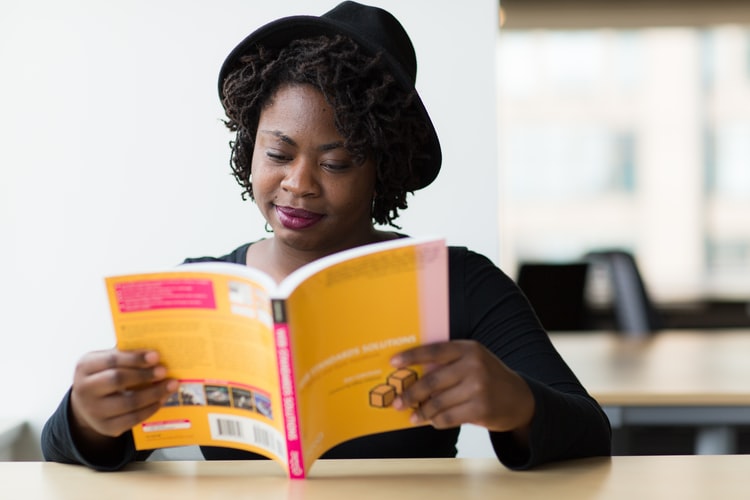
Credit: Christina @ wocintechchat.com
Now that you know to what extent critical reading helps you in almost every area of your life, you will want to develop and practice those skills. It’s significant to note that reading texts carefully is only a small part of critical reading. Additional aspects are:
- Being selective
- Knowing how to skim and scan
- Reading actively
- Taking notes
Taking Your Pick
Locating the articles, books, or any reading material that’s suitable for the topic you’re studying and then selecting which you’ll end up reading is a skill you can learn with practice.
If you choose the first text that falls into your lap to read before researching whether it’s valid or not, you can end up losing much time and effort. Especially today, when all kinds of information and reading material are available, it’s crucial to select which is relevant.
Researching before selecting your material implies you’ll find out:
- Whether the writing is relevant for the topic you want to read about
- Who the author is
- What sources they used to back up the arguments
- Whether the material is outdated
Skimming the Material
Skimming the texts for value is another part of the selection process. When you have researched the material, you need to go through it quickly before delving into it deeply.
You need to know how to skim and scan the text correctly. The former implies you speed through the chapters or paragraphs to get the overall impression of what topics are covered or even what conclusions are drawn up. The latter means you’ll look for specific parts of the text that are relevant to you, so you don’t need to bother with reading the parts that aren’t.
Reading and Analyzing
This is where deep reading comes in. When you’re sure you have the proper material you need, you can get down to work. You’ll do much critical thinking during this part, as you’ll want to ask yourself:
- How the author reached this conclusion
- Where they found the theories they’re presenting
- Whether you agree with their viewpoint/s or not
Jotting It Down
Smart students know the importance of taking notes when reading any material. If you want to possess critical reading skills, you shouldn’t count on memorizing the concepts you’ve read, especially if a larger piece of work is in question.
There are many tools you can use to annotate effectively, like:
- Post-it notes
- Highlighters
- Scribbling down your ideas or opinions while you read
- Noting down questions you have or the theories you want to test
Putting It Together
When you’re done reading a particular piece, you’ll want to make sure it doesn’t perish from your memory in half an hour. Knowing how to tie concepts together—the ones you’ve read and the conclusions you’ve drawn—so that you remember them clearly is a skill you can work on.
There are strategies to employ while reading critically that will give you the ability to talk and write on the subject matter at a later time.
Developing Critical Reading Skills—Strategies and Tips

Credit: Siora Photography
Now you know what falls under critical reading skills, you need to employ the strategies that help you use and develop those skills effectively. Here are the activities you’ll want to work on:
- Identifying the author’s purpose and audience
- Using prior knowledge
- Giving yourself time
- Using helpful tools
- Asking questions
- Summarizing
Identifying the Purpose and Intention
The importance of researching the material you want to read and knowing exactly who wrote it has already been stressed out. You can read the preface or introduction of the material to gain insight into why the author has written a particular piece you want to read.
Another important aspect of this step is learning who the text is intended for. When you know who the target audience is, you will be able to predict the tone and style of the text. You’ll also know why certain writing strategies are employed and will be able to recognize them.
You should also take note of the title of the material to get the idea of the author’s approach, attitude, or viewpoints.
Using Prior Knowledge
Your prior knowledge of the world determines a lot when you’re reading, especially when you’re planning to read something with a critical mindset. You should ask yourself what ideas about the subject matter you already have based on your prior understanding of the topic. You can then be on the sharp lookout for these ideas to be changed or expanded further.
You should be extra careful not to be subjective in your understanding of the text. While interpreting meaning will depend on your existing knowledge of the ideas, you should keep an open mind and give the author of the text a chance to surprise you.
Taking Your Time
You cannot forget that reading critically isn’t a process you can speed through. We’ve mentioned you should scan the text to select which parts of it are more important to you than others. While that is a critical step, you have to give proper time and attention to the material you end up reading.
Critical reading can be frustrating, especially if you’re introducing yourself to ideas and concepts you may not be knowledgeable about. In that case, you should not give up too quickly. Take a breather and give yourself time to read slowly or get back to the difficult parts once you gain more understanding of the subject matter.
Using Dictionaries and Other Helpful Tools
You should use today’s technology to your advantage while reading. Looking up difficult vocabulary items or theories you can’t understand from the text you’re reading is a highly effective strategy to employ.
It’s also a great idea to make a list of the topic-specific terminology you encounter. It will aid the overall reading process and make you remember what specific phrases mean as you read on.
Questioning Yourself or Joining Debates
What lies at the core of critical reading is asking yourself all kinds of questions about the text in front of you—and doing it often. Always have a pen or pencil at close reach and jot down any questions you have.
If you can form a reading group or club and engage with people who read the same material as you, then do it! New perspectives can make you see the subtleties of the text you wouldn’t notice on your own or generate more relevant questions worth exploring.
Summarizing and Reviewing
You already know you should annotate while you read. When you’re done, you should have a strategy to review all your notes and put all your ideas together.
Having a reading journal might be an effective tool for sorting everything that comes to your mind during reading. Later, you can review what you scribbled on the material and the summaries you made in your journal.
Why Is Critical Reading Important—The Benefits

Credit: Road Trip with Raj
Being able to engage critically with texts is a skill you need to possess for many different reasons. Here are all the benefits of critical reading and thinking:
- Being a better high school student
- Achieving academic success
- Succeeding at work
- Sustaining personal growth and satisfaction
- Becoming a better writer
- Gaining media literacy
Critical Reading Is a Tool You Need in High School
Whether your high school equips you with tools to develop your critical reading skills properly or not, you need to possess them to achieve success in all your subjects.
You need to analyze classic literature for your English lessons in a way that makes you reach original conclusions about the work you’re discussing. This will result in better essays on the topic that your professors will likely be blown away by.
Critical reading is important for any subject, not just English lit. For example, when you read your textbooks critically, don’t only absorb the information and torture yourself by trying to memorize theories and concepts for tests by heart. Instead, engage with the subject matter actively and analytically and form your own opinions on it. That way, you’ll remember those concepts for life.
You Can’t Be a Successful College Student Without Having Critical Reading Skills
The benefits of possessing sharp critical reading skills in college are undisputable. No matter what major you choose to study, you will need to read and write academic papers throughout your higher education.
You cannot be a successful student if you take everything you learn about at face value. In college, you will also learn the techniques about how to develop your critical reading and thinking skills. When you know why they are so important, it will make you engage with the subject willingly and with a curious mindset.

How Critical Reading Helps You in Your Career
After you graduate from high school or college, you won’t stop using critical reading and thinking. Employers don’t like people who can’t make their own judgments on a variety of topics.
For example, you may need to learn a new skill at work due to changes in operations. Having the competence to think critically will make it easier to introduce yourself to new concepts, understand their value, and form your ideas on them.
Similarly, you will have tasks at work for which you will constantly need to employ your critical reading abilities, especially if you are in charge of evaluating your team or their performance.
How Critical Reading Helps You Achieve Personal Satisfaction
Learning to read critically is learning to think for yourself. When you’re not merely a passive recipient, you challenge yourself to dive deeper into the matter, gain more wholesome knowledge, and come up with innovative solutions.
Besides making you a better student or professional, critical reading makes you grow your interests, expand your worldview, and make informed judgments on everything you hear about the world.
Critical Reading and Writing
Working on developing your critical reading abilities improves your writing skills . The two are inevitably connected, and effective writing skills are just as crucial to possess to carve your path to a successful career.
Studying how authors of the material you’re reading put the parts of their text together or what tools they used to send the message across will help you employ different writing strategies yourself and make your own texts more effective in turn.
Critical Reading Is Crucial for Media Literacy
When you’re being bombarded with news and bits of information from all sides, it’s too easy to fall into the trap of trusting any source the news comes from. The other, equally harmful scenario is being confused at contradicting reports on current events and the general climate of things.
The worst part is being fed a slew of misinformation and not knowing what to trust. To develop critical reading skills is to gain media literacy that will help you deal with this problem.
When you’re in the habit of thinking critically, you will take each text you’re reading or the news you’re listening with a grain of salt. Before deciding what is valid and what isn’t, you will learn to question the facts, and this will do much in preventing you from falling under the spell of media lies and confusion.
Can You Give Any Examples of Critical Reading Skills?
Critical reading is a key skill to possess in the modern world. If you believe that high schools aren’t teaching it properly, why not contribute with your ideas on how we can change that?
Perhaps you can also provide additional examples of critical reading skills. If any of the two is the case, write to us, and we’ll publish your words.
Let’s work together in transforming school culture so that it’s conducive to real-life learning.
Submit a Comment Cancel reply
Your email address will not be published. Required fields are marked *
Save my name, email, and website in this browser for the next time I comment.
Recent Posts
- How to become a writer after high school
- Effective Stress Management Activities for Teenagers
- Teaching Persuasive Writing in a Fun Way
- The Importance of Financial Literacy for High School Students
- Career Assessment for High School Students
Crafting Like a Pro: How Critical Thinking Improves Reading and Writing

By Nyla Lee
For many, it is easy to say that English classes are not the source of fun in school settings. From long readings to essays about details that would not matter to the casual reader, English has a way of bringing out controversial opinions in people.
However, these long readings and bloated essays resulted in one of the most important components of the mind: critical thinking. Upon learning and applying critical thinking, you can use it to your great benefit, regardless of whether you are a reader or writer. But how does critical thinking improve reading and writing?
Table of Contents
What is Critical Thinking?
Critical thinking is the act of processing and analyzing content to form an opinion or judgment of the content. For example, the iconic joke regarding the symbolism of a red curtain and its ties to depression or freedom within a fictional story derives from critical thinking lessons.
English teachers play a big role in expanding this concept when they assign a question that pertains to the symbolism behind an object or object in a novel or film to further ideas and judgments on it. I have had my fair share of over-analyzing simple things in books, such as the color red in Lois Lowry’s The Giver and how it was a metaphor for freedom and change for the protagonist, Jonas. It wasn’t a pleasant experience, but as a writing student, it did benefit me greatly.
But what’s important to note is that critical thinking goes beyond entertainment mediums and bloated assignments. People use critical thinking to assess situations and information they hear on a daily basis.
Strategies and plans derive from people using critical thinking skills to form an opinion or judgment to assess the situation better and efficiently. If you or a friend says a controversial statement, someone else may use critical thinking to question and judge the statement, based on facts or their own biases.

You may also like: 7 Powerful Ways to Edit Your Own YA Fiction Writing
Critical thinking and reading.
Reading and critical thinking are two skills that complement one another because they are both beneficial separately, but inherently successful when you use these skills simultaneously.
This is why Reading and English teachers adhere to many assignments that require students to assess the content they are consuming and consider symbols, themes, characters, and actions that require advanced assessment.
CLICK FOR THE NEWSLETTER AND BE THE FIRST TO KNOW ABOUT OUR UPDATES
How does critical thinking improve reading .
Critical thinking allows you to think realistically and from diverse perspectives when engaged in active reading sessions. For example, there are critiques of Stephanie Meyer’s Twilight that detail valid criticism regarding characterization, plot, language, and morals within the story. These criticisms include racism, age gaps, unhealthy relationships, and even predatory behavior.
Critical thinking is a large component of such critiques because you have the ability to consider the content, form an opinion, and criticize the information presented to them. This is especially true as the mind evolves and ages over time. As you get older, your perceptions and perspectives change entirely.
How Does Reading Improve Critical Thinking?
With that being said, reading can also improve critical thinking. Reading is a fundamental skill, especially when it pertains to gaining insight on other skills, such as critical thinking.
With reading, you as an author or reader have arrays of diverse perspectives on life and different morals regarding specific situations. This leads to critical thinking festering and building, as having multitudes of perspectives allows you to form opinions and judgments based on your reading exposure.
This is why reading novels from the same author or genre is not always fundamental. Because you are used to the author’s morals and viewpoints, along with respective cliches among certain genres, it can skew the critical thinking process.
Critical Thinking and Writing
Critical thinking and its connection to writing derive from the same conversation pertaining to reading. To write effectively, you should be reading frequently to get a feel of ideas, stories, grammar, and character interactions.
Many writers start out reading in tremendous quantities before dipping their toes into writing and expanding on that skill. That is because when writing, your critical thinking skills require you to form judgments surrounding your literature’s content. Take for example plotting and characterization.
Critical Thinking in Plotting and Characterization
Plotting and characterization are significant portions of the writing process that require critical thinking. As a writer, it is imperative to consider the literature’s content and how individuals will react to it, and the judgments audiences will form about not only you, but also the content’s motivations.
Currently, I am in the midst of writing a fantasy novel, and I have had to do extensive research on how to properly store fish realistically in a world where refrigeration is not as modern and simple as it is now. This process is occurring because I am adhering to my critical thinking skills and considering what my audience will assume about myself and the story if I use inaccurate storing descriptions in my story, regardless of its fantasy elements.
The Critical Thinking Role in Plotting
To successfully layout a plot point, or multiple plot points, you must think critically about the content and characters’ morals regarding the consequences and effects of the plot.
Plot points require arguments to portray diverse sides of their points. For example, the protagonist and antagonist would have opposing views of a plot point because it would either benefit or negatively affect them, respectively.
This decision requires critical thinking on your side, as it forces you to think and form judgments on the plot and apply it to real world morals.
The Critical Thinking Role in Characterization
Characterization functions similarly, especially when it pertains to characters of color and their significance in a story. It requires you to think critically when creating characters of color and their reactions to scenarios in a story, depending on race and its factor in a plot.
For those whose critical thinking skills are not strengthened, they may use stereotypes to fill out their character of color and apply it to the story without considering the judgments and opinions audiences could garner from such an action. This is certainly an issue.
I am unsure of how many times I have come across a story where many characters of color fit dangerous and unhealthy stereotypes that would not only offend people of color, but cause audiences to assume that the author did not adequately research those groups of people to realistically portray them.
On the other hand, if you as an author use your critical thinking skills, you will research and consider a creative and diverse manner in which you could approach your character of color without stereotyping and using poor judgment and critical thinking skills. Cassandra Clare ( The Mortal Instruments series ) and Rick Riordan ( Percy Jackson series ) are classic examples of writers who describe people of color in YA literature well.
This is why critical thinking is such an improvement when it comes to writing. It requires you to second guess yourself and your motivations before you stick to one idea or plan.
Better yet, sign up to receive the newsletter and be the first to know about our updates .
Final take on critical thinking for reading and writing.
Earlier English classes surely exhausted us with bloated assignments regarding how to analyze curtains, colors, and their significance to plots and characters. But they also allowed us to think beyond a smaller bubble and apply judgments and opinions to multiple perspectives in an organized and thoughtful fashion.
With all this being said, critical thinking is crucial to reading and writing. Whether an author or a reader, it requires you to expand your thoughts beyond the surface-level ideas.
As a reader, critical thinking allows you to hypothesize and theorize about situations and plots that you have formed strong opinions on. As a writer, critical thinking forces you all to look beyond previous judgments and consider more than your own perspective when creating literature.
So, what do you think? Has critical thinking helped you in your reading and writing journey? If not, will you give it a try and happily over-analyze the symbolism of the apple your teacher mentioned in a chapter of required reading? Share your thoughts with us in the comments below.
By: Nyla Lee
Nyla Lee is a writer and student of English Literature looking to answer those burning questions about the process of writing. She strives to find answers by applying the influence of pop culture to reach her audience in ways that interest and benefit them.
YOU MIGHT ALSO LIKE

Why Manga Should Be Considered a Literary Work of Art

Why Historical Fiction Is Important For Children’s Learning

Jane Austen for Any Age: How to Write with Jane Austen’s Juvenilia
Copyright © 2016-2022 KIDPRESSROOM Privacy Policy │Powered by SiteGreat
More From Forbes
13 Easy Steps To Improve Your Critical Thinking Skills
- Share to Facebook
- Share to Twitter
- Share to Linkedin
With the sheer volume of information that we’re bombarded with on a daily basis – and with the pervasiveness of fake news and social media bubbles – the ability to look at evidence, evaluate the trustworthiness of a source, and think critically is becoming more important than ever. This is why, for me, critical thinking is one of the most vital skills to cultivate for future success.
Critical thinking isn’t about being constantly negative or critical of everything. It’s about objectivity and having an open, inquisitive mind. To think critically is to analyze issues based on hard evidence (as opposed to personal opinions, biases, etc.) in order to build a thorough understanding of what’s really going on. And from this place of thorough understanding, you can make better decisions and solve problems more effectively.
To put it another way, critical thinking means arriving at your own carefully considered conclusions instead of taking information at face value. Here are 13 ways you can cultivate this precious skill:
1. Always vet new information with a cautious eye. Whether it’s an article someone has shared online or data that’s related to your job, always vet the information you're presented with. Good questions to ask here include, "Is this information complete and up to date?” “What evidence is being presented to support the argument?” and “Whose voice is missing here?”
2. Look at where the information has come from. Is the source trustworthy? What is their motivation for presenting this information? For example, are they trying to sell you something or get you to take a certain action (like vote for them)?
Best High-Yield Savings Accounts Of 2024
Best 5% interest savings accounts of 2024.
3. Consider more than one point of view. Everyone has their own opinions and motivations – even highly intelligent people making reasonable-sounding arguments have personal opinions and biases that shape their thinking. So, when someone presents you with information, consider whether there are other sides to the story.
4. Practice active listening. Listen carefully to what others are telling you, and try to build a clear picture of their perspective. Empathy is a really useful skill here since putting yourself in another person's shoes can help you understand where they're coming from and what they might want. Try to listen without judgment – remember, critical thinking is about keeping an open mind.
5. Gather additional information where needed. Whenever you identify gaps in the information or data, do your own research to fill those gaps. The next few steps will help you do this objectively…
6. Ask lots of open-ended questions. Curiosity is a key trait of critical thinkers, so channel your inner child and ask lots of "who," "what," and "why" questions.
7. Find your own reputable sources of information, such as established news sites, nonprofit organizations, and education institutes. Try to avoid anonymous sources or sources with an ax to grind or a product to sell. Also, be sure to check when the information was published. An older source may be unintentionally offering up wrong information just because events have moved on since it was published; corroborate the info with a more recent source.
8. Try not to get your news from social media. And if you do see something on social media that grabs your interest, check the accuracy of the story (via reputable sources of information, as above) before you share it.
9. Learn to spot fake news. It's not always easy to spot false or misleading content, but a good rule of thumb is to look at the language, emotion, and tone of the piece. Is it using emotionally charged language, for instance, and trying to get you to feel a certain way? Also, look at the sources of facts, figures, images, and quotes. A legit news story will clearly state its sources.
10. Learn to spot biased information. Like fake news, biased information may seek to appeal more to your emotions than logic and/or present a limited view of the topic. So ask yourself, “Is there more to this topic than what’s being presented here?” Do your own reading around the topic to establish the full picture.
11. Question your own biases, too. Everyone has biases, and there’s no point pretending otherwise. The trick is to think objectively about your likes and dislikes, preferences, and beliefs, and consider how these might affect your thinking.
12. Form your own opinions. Remember, critical thinking is about thinking independently. So once you’ve assessed all the information, form your own conclusions about it.
13. Continue to work on your critical thinking skills. I recommend looking at online learning platforms such as Udemy and Coursera for courses on general critical thinking skills, as well as courses on specific subjects like cognitive biases.
Read more about critical thinking and other essential skills in my new book, Future Skills: The 20 Skills & Competencies Everyone Needs To Succeed In A Digital World . Written for anyone who wants to surf the wave of digital transformation – rather than be drowned by it – the book explores why these vital future skills matter and how to develop them.
- Editorial Standards
- Reprints & Permissions
- Skip to main content
- Keyboard shortcuts for audio player

Perspective
- LISTEN & FOLLOW
- Apple Podcasts
- Google Podcasts
- Amazon Music
Your support helps make our show possible and unlocks access to our sponsor-free feed.
Here's how to set your reading goals and read more books in 2024

Mansee Khurana

Even if you're someone who reads regularly, it can be hard to keep up your reading goals. Jackie Lay /NPR hide caption
Even if you're someone who reads regularly, it can be hard to keep up your reading goals.
Trying to read more can be a hard habit to stick to – even if you're someone who regularly reads a lot.
Just ask Nadia Odunayo, the founder and CEO of The StoryGraph, a book recommendation website with over a million users. Odunayo said that when she started The Storygraph in 2019, reading more felt like an essential goal.
"It felt like it very much became part of my identity as a reader, " Odunayo told Morning Edition . "Like, I run a books company, I need to make sure I'm reading."
In a few years, Odunayo went from reading 13 books a year to well over 70.
While she feels like that's a realistic goal for her, it's not an achievable goal for everybody.
Odunayo says setting realistic expectations about how many books you want to read can be the key to success. But making sure you pick the right a mount of books to read in a year can be tricky.
"It was a combination of making the time, but also being excited about a lot more books, " Odunayo said.

Why it's OK to judge a book by its cover (and more tips on how to find a great read)
A Economist/YouGov poll found that 46% of Americans finished zero books last year and 5% read just one last year. Out of the 1,500 American's surveyed in the poll, only 21% read more than ten books.
With March being National Reading Month – it is a good time to think about revisit your reading goals from the beginning of the year. Whether you've just gotten into reading, or you're churning through multiple books a week, here's some tips to keep in mind as you're setting your reading goals.

Expand your reading horizons by thinking about what types of books you're reading. Jackie Lay /NPR hide caption
Expand your reading horizons by thinking about what types of books you're reading.
Think genres, not numbers
Reading goals don't always have to be numerical. Goals such as wanting to read books from more diverse authors or reading more of a specific genre can be better than just focusing on a number. Brea Grant, one of the hosts of the podcast Reading Glasses , says she realized she didn't want to set a number goal when she found herself reading books she didn't like, or finishing books just for the sake of hitting a number.
"That's not fun because that's going to eventually turn you off from reading," Grant said.

Here are the Books We Love: 380+ great 2023 reads recommended by NPR
Sites like The StoryGraph features reading challenges that users can participate in to expand their reading habits. One challenge recommends books from 10 different countries for users who want to read from more diverse authors.
You can also create your own goals. If you're an avid fantasy romance reader, for example, you may want to see how many science fiction books you can incorporate into your reading habit.
Sometimes, it can be as simple as reading books on a topic you're interested in. Grant, a filmmaker, decided that this year that she wanted to read more books about filmmaking.
"I didn't go to film school, and I realized that I haven't even read that many books about filmmaking, even though I've been a filmmaker for so many years," Grant said. "So I think that focusing on reading more books about my craft is a better goal than a specific number of books."

Reading might seem like a solitary hobby, but it doesn't have to be! Jackie Lay /NPR hide caption
Reading might seem like a solitary hobby, but it doesn't have to be!
Find more ways to make reading a community affair
Reading can often seem like a solitary hobby, but it doesn't have to be.
Check your local area for book clubs and reading-related events. Or find someone to talk to about books – and you don't even have to ask about what they are currently reading. You can ask them about their favorite book, or the book that impacted their life the most.
"That's another way that people can show that they're bookish without necessarily being like 'I read 400 books this year'," Mallory O' Meara, who hosts the Reading Glasses podcast with Grant, said.
If you'd rather get lost in a book alone, O'Meara says you might enjoy finding new spots to read in your city. It might feel intimidating going into a coffee shop or bar alone, but it can be a fun way to explore your neighborhood while doing something you love.
How to start a book club: Tips and reading suggestions
"We really encourage people to make it an activity," Grant said. "Get a cozy blanket, get a cup of tea, something that you look forward to at the end of the day."
Whatever you prefer, Grant says it's always important to remember why you want to read more, and not get too caught up in feeling like you have to read a certain number of books.
"Reading is a hobby, and you want to get the maximum enjoyment out of it," Grant said.
Don't be afraid to adjust your goal
At the beginning of the year, it's easy to set high expectations of yourselves. You think you can workout everyday, or read a book every week. But as the year goes on, you might want to adjust that number to a goal you know you can reach.
"There's a lot of things we won't achieve in life," Grant said. "Make reading something you know you can get done."
Finding that perfect number can be hard.You want something that challenges you, but doesn't feel unrealistic. Additionally, life can get in the way. These challenges could include large work projects or family obligations that you didn't anticipate at the beginning of the year.

Pop Culture Happy Hour
How to get the most out of your library.
Suzanne Skyvara, who leads marketing at Goodreads, a book recommendation site where over six million users participate in its annual reading challenge, recommends adjusting your number later in the year if you need, and encourages not to think of changing your goal as "failing."
"If you're finding that you've set the goal too high in the middle of the year and it's becoming demotivating you can bring it down, which re-energizes me and gets me back on track," Skyvara said.
After all, reading should be a hobby, not homework.
"The goal should always be to enjoy your reading life more," O' Meara said. "To read more books that you either love or teach you something or you connect with in some way."
Correction March 28, 2024
This article was updated to fix the amount of Goodreads users particpating in the the site's annual reading challenge.
- how many books should I read
- reading more books
- From Our Readers
- freshman reading list
No products in the cart.
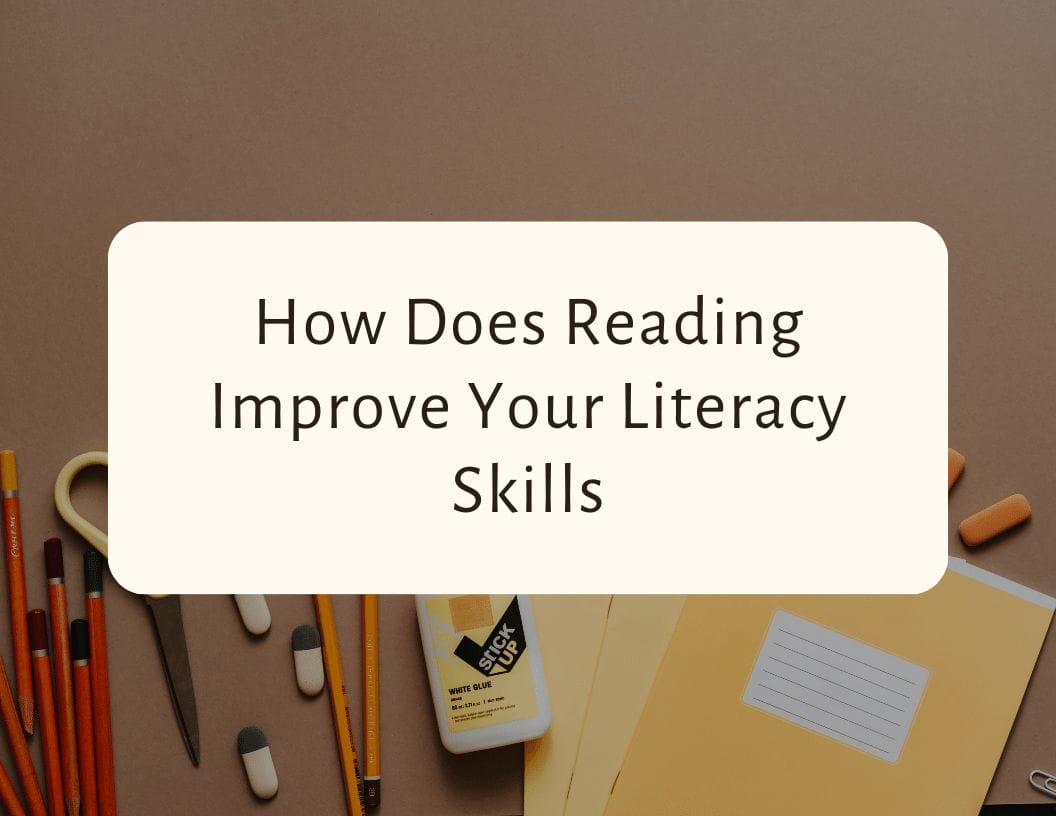
How does reading improve your literacy skills?
The Importance of Reading for Literacy Skills Improvement
Reading and its Role in Enhancing Literacy Proficiency
Academic assessments prove that reading is essential for improving literacy skills. It helps individuals learn new words, understand the context, and broaden their knowledge base. Also, it assists in developing critical thinking by following a logical argument.
Reading further helps conceptualize grammatical structures and linguistic patterns with real-life context. It helps comprehend language principles, write creatively, and improve communication skills.
Research reveals that regular readers are more fluent and comprehend better than non-readers. Data affirms this; children who read often have better grades and advance faster in academic schooling than non-regular readers.
Studies by renowned research institutes show that reading boosts vocabulary at every stage of life. For instance, frequent readers gain an average of 1,000 words per year. To lead successful lives, reading must be prioritized from early childhood to adulthood.
A noteworthy fact: A National Literacy Trust UK survey in 2020 indicated that over one-third of children spent more time reading during lockdowns than before.
Reading is like a brain gym- instead of gaining muscles, one gains an extended vocabulary and enhanced comprehension skills.
The Different Ways Reading Improves your Literacy Skills
Reading: The Key to Advanced Literacy Skills
Reading is an essential component of developing advanced literacy skills, including writing and critical thinking. Reading improves vocabulary, grammar, and overall comprehension. Additionally, reading enhances analytical skills, interpretation, and even empathy towards others.
Through consistent reading, individuals can develop a deeper understanding of complex subject matters and cultivate their creativity. Reading also empowers individuals with the ability to articulate thoughts and opinions in a clear and coherent manner. The chance to explore different perspectives and narratives through literature and other reading materials helps individuals develop their critical thinking skills .
Furthermore, reading is not just limited to traditional books. With the advent of technology, digital reading materials such as online articles and e-books offer equally valuable opportunities for developing advanced literacy skills.
In fact, according to a study by Pew Research Center, 80% of Americans believe that reading helps them improve their vocabulary and comprehension skills . This highlights the significance of reading in improving literacy skills amongst individuals.
You know you’re a bookworm when you use words like ‘prolific’ and ‘ebullient’ in everyday conversation, thanks to all the reading you do.
Reading Enhances Vocabulary
Reading is a great way to boost your lexicon ! Complex writing, sentence structure, and contexts can help you learn new words. Plus, avid readers develop strong word recognition abilities. This helps them to easily integrate new terms into their vocabulary.
And, reading is better than rote memorization at helping you remember and recall recently learnt words. Using a dictionary or an e-reader with a built-in vocabulary feature is a great tool for understanding unfamiliar words.
Here’s a pro tip: Pick books that are slightly above your regular reading level . This will expose you to new language while expanding your linguistic proficiency. Plus, it can help you understand words like ‘ insomnia ‘. Reading won’t solve your sleep issues, but it can help you understand what the word means!
Reading Improves Comprehension Skills
Reading brings many benefits, like increasing your capacity to comprehend written text. It hones critical thinking skills and helps when studying or analyzing complex documents. By engaging with different texts, you can expand your vocabulary and knowledge of a language.
With varied genres like fiction, non-fiction, and poetry, readers can acquire strong comprehension abilities. It also boosts their imaginative and evaluative skills, helping them recognize concepts and draw conclusions.
Reading helps identify the tone or mood of written communication without help. It prepares you for linguistic challenges in daily life. As an example, Warren Buffett spends six hours daily reading material related to investing , leading him to become one of the wealthiest investors.
Regularly engaging with various types of literature not only improves comprehension, but also strengthens cognitive capabilities and provides useful insights for forming better opinions. Reading may not make you a genius, but you’ll understand what Einstein is talking about!
Reading Enhances Cognitive Abilities
Reading has been linked to cognitive enhancement and intellectual growth . It helps increase attention, analytical skills, and memory. It also boosts vocabulary and language comprehension leading to better communication. Stanford University found that readers have better brain connectivity and mental flexibility than non-readers.
Reading also increases creativity and emotional intelligence. It exposes one to different perspectives and experiences, developing empathy. Literature opens the imagination, and allows for critical, creative thinking.
A University of Nevada study found that children who grew up around books have better academic success in life . This was true even if their parents had lower education levels or other socioeconomic factors.
Reading is the ultimate mental exercise ! It builds critical thinking skills and flexes analysis abilities like a literary gym-goer.
Reading Promotes Critical Thinking and Analysis
Reading literature can sharpen your thinking skills and help you analyze texts. As you read more intricate narratives, you learn to analyze different perspectives and make informed decisions. Your cognitive skills are honed as you explore the plots, characters, settings, and themes. This allows you to gain insight into the text, and form valid interpretations.
Also, reading encourages inferential reasoning. You need to deduce from both explicit and implicit information. It enhances your comprehension by making you understand implications and connections that may not be stated directly.
Moreover, analytical thinking helps you cultivate leadership qualities. It teaches you how to resolve problems on your own. The more you read and reflect critically on yourself, the better decision-maker you become.
If you want to upgrade your analytical skills or develop critical thinking, start reading daily. Try classic literature or inspiring non-fiction books . Doing this will broaden your outlook and create pathways of thought that help you solve problems. This leads to growth in literacy abilities. So read regularly, and watch your writing skills soar!
Reading Develops Writing Skills
Reading sharpens one’s writing skills . It helps gain new words and structures, resulting in more complex and interesting writing. Also, reading helps organize thoughts better when writing . It’s been discovered that readers write better than non-readers. As Stephen King says, “ Read a lot and write a lot “.
Before traditional education, literature was passed down orally. This aided language fluency through better vocabulary and articulation. From kids’ books to scholarly journals, each type of reading is a brain workout – and who doesn’t want great literacy?
The Impact of Different Types of Reading Materials on Literacy Skills
Paragraph 1 – Reading Materials and their Impact on Literacy:
Different types of reading materials have varying impact on literacy skills. The kind of reading material we choose can affect our comprehension, vocabulary, and critical thinking.
Paragraph 2 – Table of Impact of Reading Materials on Literacy:
Paragraph 3 – Enhancing Literacy Skills:
The reading material that we choose should cater to our interests and cognitive abilities. Reading challenging material can improve our reading capacity, while reading for pleasure can enhance our language and imagination.
Paragraph 4 – Historical Significance:
The association between reading and literacy dates back to the invention of the printing press in the 15th century. Access to printed materials increased literacy rates, and the spread of literature created a more informed society.
If you can read a book and still keep up with the Kardashians, your literacy skills are on point.
Fiction Reading
Fiction reading can greatly improve literacy skills! It encourages imagination and critical thinking, plus expands vocabulary and increases comprehension. People who read fiction often have better empathy and social communication skills . Plus, it creates opportunities for self-reflection and personal growth.
Encouraging fiction reading is important . Parents can introduce kids to age-appropriate literary works. Teachers can include fictional texts in their lessons and discussion prompts. Individuals should make time for leisurely reading in their daily routines – books or digital formats like e-books.
Don’t miss out on the benefits of fiction reading! It can help one’s cognitive abilities, empathy levels, and language fluency. Incorporate regular fiction reading into your lifestyle – it will definitely boost your overall literacy skill set. Nonfiction is also a great way to improve your literacy skills!
Nonfiction Reading
Non-fiction readings can help improve literacy skills.
These materials offer targeted learning opportunities, such as facts, events, biographies and scientific theory . There is a great variety of non-fiction reading options, like books, articles and journals .
Non-fiction materials can connect readers to real-life experiences, provide practical knowledge and stimulate creativity. They also give insights into social awareness, natural history and personal development . Young readers develop empathy when they learn about the world.
Non-fiction is beneficial for all age groups, including children, teens and adults. For children, it can develop interest-based reading habits.
The Magna Carta , signed in 1215, was an example of written records making English law accessible. This helped accuracy in communication and is still relevant today.
Reading for pleasure is like a hot fudge sundae. Reading for academic purposes is like a kale smoothie – necessary but not enjoyable.
Reading for Pleasure versus Reading for Academic Purposes
Reading is essential to develop literacy skills. But reading for pleasure and reading for academic purposes have different impacts. Fiction stories help build a love of reading and improve fluency . Textbooks are more complex and provide knowledge. Both have their benefits.
When reading, different approaches are needed for each. With academic texts, students need to highlight key points and take notes. When pleasure reading, readers can be free and relaxed . Both are necessary for a good literacy program. Bridging these modes can help students learn and enjoy both.
The advantages of reading should not be underestimated . The fear of missing out is enough to motivate someone to start investing time in improving language proficiency with quality literature.
Frequently Asked Questions
1. How does reading help improve your vocabulary?
Reading exposes you to a wide range of words, including unfamiliar ones. Through this exposure, your brain connects the word with its definition and context, helping you expand your vocabulary.
2. What are some other benefits of reading?
Reading can improve your critical thinking skills, increase your knowledge, reduce stress and anxiety, and enhance your imagination and empathy.
3. How can reading help with writing and communication skills?
Reading familiarizes you with different writing styles, story structures, and sentence constructions. These can all be applied to your own writing, making it more effective and engaging. Additionally, reading can help improve communication skills, as you become more articulate and confident in expressing your thoughts and ideas.
4. Can reading help with academic success?
Reading is one of the most fundamental skills needed for academic success. It is necessary for understanding textbooks, articles, and other academic resources. In addition, reading comprehension and critical analysis are key components of academic learning.
5. How much should I read to see improvement in my literacy skills?
Any amount of reading can be beneficial, but to see significant improvement in your literacy skills, it is recommended that you read for at least 30 minutes to an hour every day.
6. Can reading help with other cognitive functions?
Yes, reading has been linked to improved cognitive functions, such as memory, concentration, and brain connectivity. It can also help delay or prevent cognitive decline in older adults.
Similar Posts

why craft is important
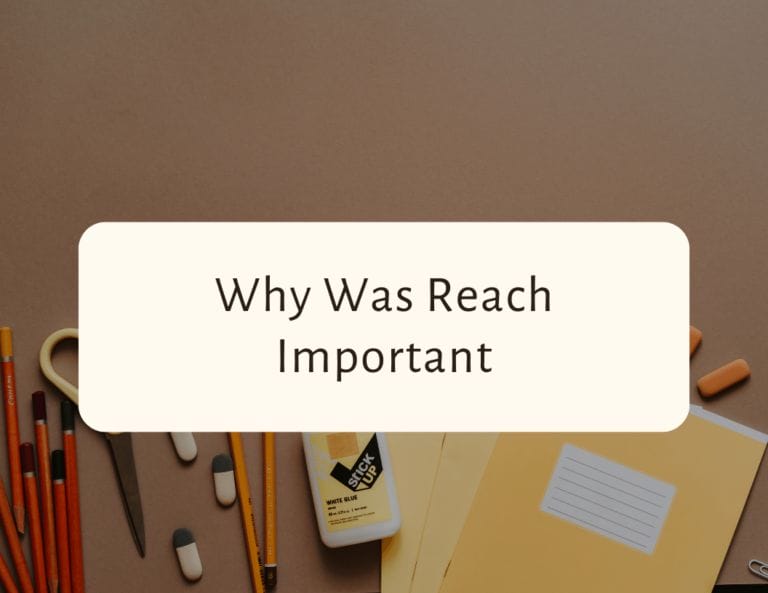
why was reach important

what is the importance of f.i.t.t principle
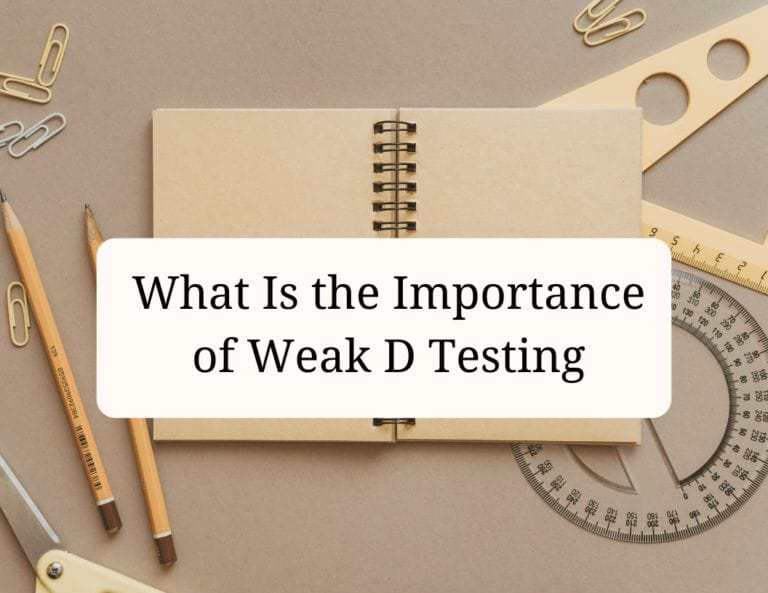
what is the importance of weak d testing

Is Play-Doh Still in Business?
Is Play-Doh Still in Business? Yes! Play-Doh is still in business and has been a popular childhood toy for decades. The company was founded in Cincinnati, Ohio in 1932. It was originally marketed as a wallpaper cleaner, but it quickly became popular among children. In 1957, the company was sold to the General Mills corporation,…
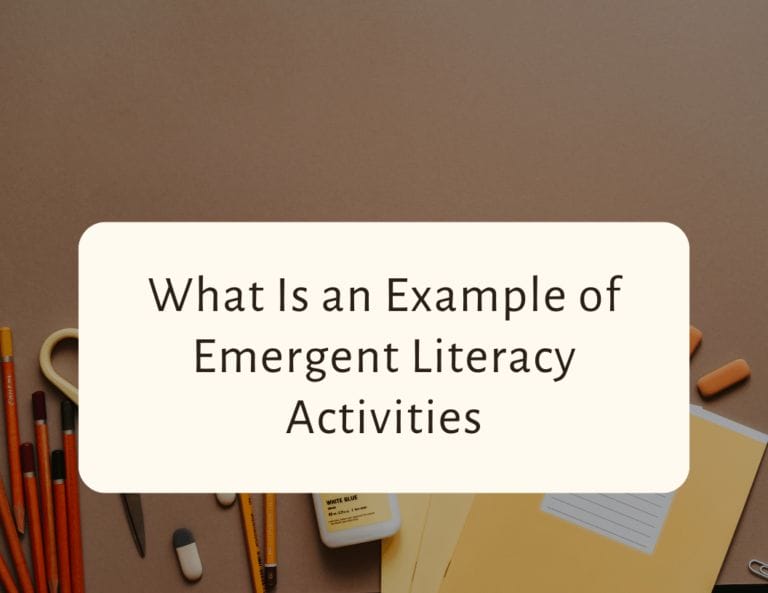
What is an example of emergent literacy activities?
Leave a reply cancel reply.
Your email address will not be published. Required fields are marked *
Save my name, email, and website in this browser for the next time I comment.
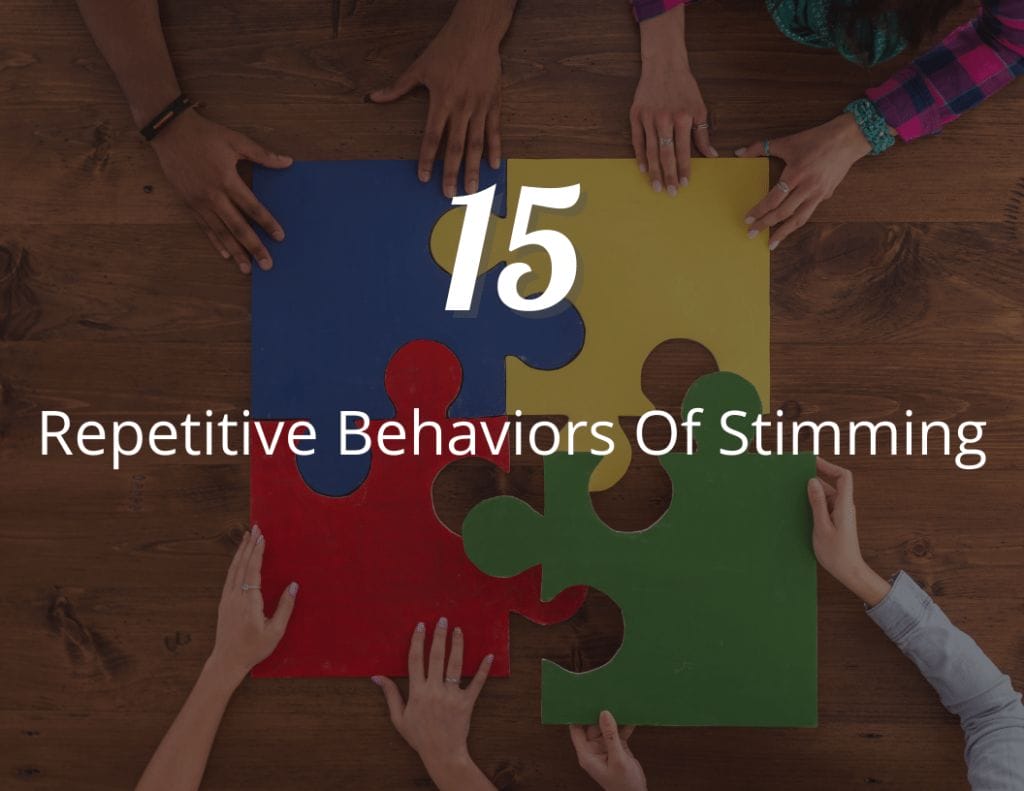
Stimming and Autism: 15 Repetitive Behaviors You Need to Know

25 Best Social Skill Training Exercises for Children with Autism
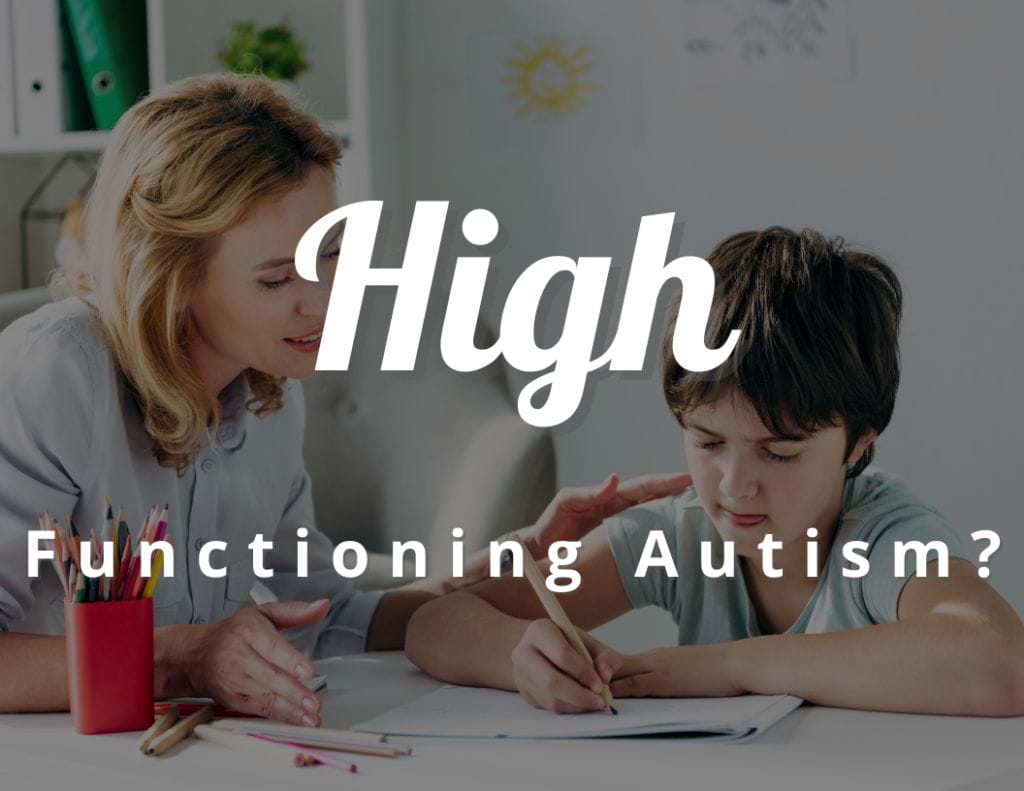
What is High Functioning Autism? Signs, Symptoms and When to Diagnose.
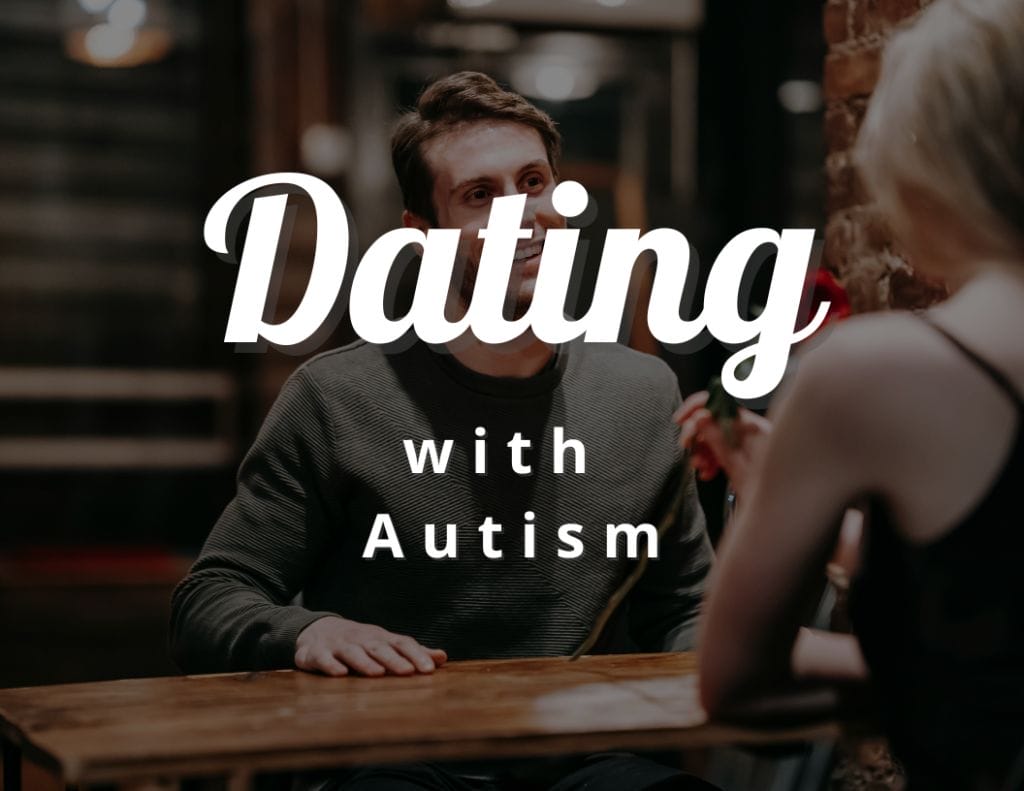
20 Tips for Dating Someone with Autism Spectrum Disorder

10 Important Autism Traits and Everything You Need to Know About Signs of Autism

Alarming Rise in Autism: Data About the Increase in Autism Rates
Subscribe to our newsletter.
Subscribers get exclusive access to printable resources, special discounts, and early-bird notifications for our workshops.
Let’s keep the spark of creativity alive together! 🎨✨💌
32 Phonics Lessons
Up to 69% off
Teach your child to read.
- Our Mission
6 Ways to Improve Students’ Math Literacy
Middle and high school math teachers can use these ideas to build students’ reading comprehension and reasoning skills using real tasks like budgeting.

While a lot has changed in math instruction over the years, the idea that students need to be math literate has been constant. Being math literate means much more than calculations. Life events such as buying a home, paying taxes, or even estimating how much you’ll spend on groceries require modeling and reasoning skills.
State and district tests often include problems that are real-world based, and that means that students will need to use reading comprehension, along with math skills, in order to show proficiency. This can be particularly difficult for students with learning disabilities, those who have had interrupted schooling, and/or emergent multilingual learners. It’s imperative that math teachers develop a tool kit to help students decipher the math moves needed for such problems.
Through my dissertation research and my many years of teaching mathematics with great math teachers, I have found simple ways to help students become more math literate. Here are some practical ideas on how teachers can help students become math literate, from the perspective of Algebra 1 teachers from various backgrounds.
6 Ways to Help Students Gain Math Literacy
1. Use sentence frames. Sentence frames are a simple way to help students of all backgrounds learn how to state their answers and ask any questions they have about a word problem. Teachers can post sentence frames on a board or even on students’ desks for easy access. Here are some examples:
- “I agree with this answer because ____.”
- “I believe the answer is ____ because ____.”
- “I showed my work by ____.”
- “One strategy that may be helpful is ____ because ____.”
2. Bring back the highlighter. Many Algebra 1 teachers agree that the highlighter is a great way to help emphasize learning in mathematics. The highlighter gives students control of the parts of the problem that they find important. A good suggestion is to demonstrate the use of highlighting key words and have highlighters available for every task and assessment. It also helps students see the patterns in math problems.
3. Speak “algebra.” Students in all math classes need to be speaking math in their classes. It’s important to use the appropriate vocabulary words that pertain to the lesson. This is particularly important as students see formal math language in textbooks and standardized tests. Yes, breaking down the vocabulary for comprehension is a great tactic, but bringing it back to the standard math vocabulary is how we make connections.
4. Use word walls. The word wall was an important part of many math classrooms a few decades ago. They made sure that students saw math words that related to a particular topic being taught. For example, when introducing a polynomial unit, teachers would often put words such as monomial , trinomial , and polynomial on the word wall.
Many Algebra 1 teachers feel that having the visual is most important as students learn about new topics. Students need visual reminders. One suggestion was for students to “own” the word wall by passing out the words in advance and having them hang up each word as it was introduced throughout the unit. Students can make the words artsy and creative in an effort to personalize the resource.
5. Provide foldables or graphic organizers. The use of foldables in the math classroom is a game changer for many students, especially in the post-pandemic era. These low-tech student- or teacher-made “books” constructed out of folded paper provide learners with a handy place to write down the main concepts introduced in a unit. Students have been so used to math technology that there is a need to bring them back to tactile methods.
Providing a foldable to sum up or even begin a unit is a cost-effective method and allows students to use paper and scissors in a creative way to refer to math vocabulary and common word problems. You can find lots of free ideas for foldables online , and there are sites that sell them as well. Some of the designs are very creative and bring a bit of visual art into your math classroom.
6. Have students write relevant word problems. Every time there’s a new curriculum or textbook, word problems get a refresher to connect with the current generation, but there’s no reason why students can’t make up their own. Allow them to write their own word problems, using the context you’re teaching. Not only will students own their own learning, but also they will be able to use critical thinking skills to combine math, vocabulary, and everyday life to further their understanding.
Making the math classroom become a laboratory of reading and math enables students to become owners of the learning process. Students can be math literate, which will allow teachers to facilitate learning processes with all types of word problems, and consequently improve math scores and prepare students for the world of infusing mathematics into their everyday lives.
- Open access
- Published: 26 March 2024
The effect of “typical case discussion and scenario simulation” on the critical thinking of midwifery students: Evidence from China
- Yuji Wang 1 na1 ,
- Yijuan Peng 1 na1 &
- Yan Huang 1
BMC Medical Education volume 24 , Article number: 340 ( 2024 ) Cite this article
143 Accesses
Metrics details
Assessment ability lies at the core of midwives’ capacity to judge and treat clinical problems effectively. Influenced by the traditional teaching method of “teacher-led and content-based”, that teachers involve imparting a large amount of knowledge to students and students lack active thinking and active practice, the clinical assessment ability of midwifery students in China is mostly at a medium or low level. Improving clinical assessment ability of midwifery students, especially critical thinking, is highly important in practical midwifery education. Therefore, we implemented a new teaching program, “typical case discussion and scenario simulation”, in the Midwifery Health Assessment course. Guided by typical cases, students were organized to actively participate in typical case discussions and to promote active thinking and were encouraged to practice actively through scenario simulation. In this study, we aimed to evaluate the effect of this strategy on the critical thinking ability of midwifery students.
A total of 104 midwifery students in grades 16–19 at the West China School of Nursing, Sichuan University, were included as participants through convenience sampling. All the students completed the Midwifery Health Assessment course in the third year of university. Students in grades 16 and 17 were assigned to the control group, which received routine teaching in the Midwifery Health Assessment, while students in grades 18 and 19 were assigned to the experimental group, for which the “typical case discussion and scenario simulation” teaching mode was employed. The Critical Thinking Disposition Inventory-Chinese Version (CTDI-CV) and Midwifery Health Assessment Course Satisfaction Questionnaire were administered after the intervention.
After the intervention, the critical thinking ability of the experimental group was greater than that of the control group (284.81 ± 27.98 and 300.94 ± 31.67, p = 0.008). Furthermore, the experimental group exhibited higher scores on the four dimensions of Open-Mindedness (40.56 ± 5.60 and 43.59 ± 4.90, p = 0.005), Analyticity (42.83 ± 5.17 and 45.42 ± 5.72, p = 0.020), Systematicity (38.79 ± 4.70 and 41.88 ± 6.11, p = 0.006), and Critical Thinking Self-Confidence (41.35 ± 5.92 and 43.83 ± 5.89, p = 0.039) than did the control group. The course satisfaction exhibited by the experimental group was greater than that exhibited by the control group (84.81 ± 8.49 and 90.19 ± 8.41, p = 0.002).
The “typical case discussion and scenario simulation” class mode can improve the critical thinking ability of midwifery students and enhance their curriculum satisfaction. This approach carries a certain degree of promotional significance in medical education.
Typical case discussion and scenario simulation can improve midwifery students’ critical thinking ability.
Typical case discussion and scenario simulation can enhance students’ learning interest and guide students to learn independently.
Midwifery students were satisfied with the new teaching mode.
Peer Review reports
Maternal and neonatal health are important indicators to measure of the level of development of a country’s economy, culture and health care. The positive impact of quality midwifery education on maternal and newborn health is acknowledged in the publication framework for action strengthening quality midwifery education issued by the World Health Organization (WHO) [ 1 ]. Extensive evidence has shown that skilled midwifery care is crucial for reducing preventable maternal and neonatal mortality [ 2 , 3 , 4 ]. Clinical practice features high requirements for the clinical thinking ability of midwives, which refers to the process by which medical personnel analyze and integrate data with professional medical knowledge in the context of diagnosis and treatment as well as discover and solve problems through logical reasoning [ 5 ]. Critical thinking is a thoughtful process that is purposeful, disciplined, and self-directed and that aims to improve decisions and subsequent actions [ 6 ]. In 1986, the American Association of Colleges of Nursing formulated the “Higher Education Standards for Nursing Specialty”, which emphasize the fact that critical thinking is the primary core competence that nursing graduates should possess [ 7 ]. Many studies have shown that critical thinking can help nurses detect, analyze and solve problems creatively in clinical work and is a key factor in their ability to make correct clinical decisions [ 8 , 9 , 10 ].
However, the traditional teaching method used for midwifery students in China is “teacher-led and content-based”, and it involves efficiently and conveniently imparting a large amount of knowledge to students over a short period. Students have long failed to engage in active thinking and active practice, and the cultivation of critical thinking has long been ignored [ 5 ]. As a result, the critical thinking ability of midwifery students in China is mostly at a medium or low level [ 5 ]. Therefore, it is necessary to develop a new teaching mode to improve the critical thinking ability of midwifery students.
In 2014, Professor Xuexin Zhang of Fudan University, Shanghai, China, proposed a novel teaching method: the divided class mode. The basic idea of this approach is to divide the class time into two parts. The teachers explain the theoretical knowledge in the first lesson, and the students discuss that knowledge in the second lesson. This approach emphasizes the guiding role of teachers and encourages and empowers students to take responsibility for their studies [ 11 ]. Research has shown that the divided class mode can improve students’ enthusiasm and initiative as well as teaching effectiveness [ 12 ].
The problem-originated clinical medical curriculum mode of teaching was first established at McMaster University in Canada in 1965. This model is based on typical clinical cases and a problem-oriented heuristic teaching model [ 13 ]. The process of teaching used in this approach is guided by typical cases with the goal of helping students combine theoretical knowledge and practical skills. This approach can enhance the enthusiasm and initiative of students by establishing an active learning atmosphere. Students are encouraged to discuss and analyze typical cases to promote their ability to digest and absorb theoretical knowledge. Research has shown that the problem-originated clinical medical curriculum teaching mode can enhance students’ confidence and improve their autonomous learning and exploration ability. Scenario simulation teaching can provide students with real scenarios, allowing them to practice and apply their knowledge in a safe environment [ 14 ], which can effectively improve their knowledge and clinical skills and enhance their self-confidence [ 15 , 16 ].
Based on the teaching concept of divided classes, our research team established a new teaching model of “typical case discussion and scenario simulation”. Half of the class time is allocated for students to discuss typical cases and carry out scenario simulations to promote their active thinking and active practice. The Midwifery Health Assessment is the final professional core course that midwifery students must take in our school before clinical practice. All students must complete the course in Grade 3. Teaching this course is important for cultivating the critical thinking and clinical assessment ability of midwifery students. Therefore, our team adopted the new teaching mode of "typical case discussion and scenario simulation" in the teaching of this course. This study explored the teaching mode’s ability to improve the critical thinking ability of midwifery students.
Study design
The study employed a semiexperimental design.
Participants
A convenience sample of 104 third-year midwifery students who were enrolled in the Midwifery Health Assessment course volunteered to participate in this research at a large public university in Sichuan Province from February 2019 to June 2022 (grades 16 to 19). All the students completed the course in the third year of university. Students in grades 16 and 17 were assigned to the control group, which received the traditional teaching mode. Students in grades 18 and 19 were assigned to the experimental group, in which context the “typical case discussion and scenario simulation” class mode was used. The exclusion criteria for midwifery students were as follows: (1) dropped out of school during the study, (2) took continuous leave from school for more than two weeks, or (3) were unable to complete the questionnaire. The elimination criterion for midwifery students was that all the items were answered in the same way. No significant differences in students’ scores in their previous professional courses (Midwifery) were observed between the two groups. Textbooks, teachers, and teaching hours were the same for both groups.
Development of the “typical case discussion and scenario simulation” class mode
This study is based on the implementation of the new century higher education teaching reform project at Sichuan University. With the support of Sichuan University, we first established a “typical case discussion and scenario simulation” class mode team. The author of this paper was the head of the teaching reform project and served as a consultant, and the first author is responsible for supervising the implementation of the project. Second, the teaching team discussed and developed a standard process for the “typical case discussion and scenario simulation” class mode. Third, the entire team received intensive training in the standard process for the “typical case discussion and scenario simulation” class mode.
Implementation of the “typical case discussion and scenario simulation” class mode
Phase i (before class).
Before class, in accordance with the requirements for evaluating different periods of pregnancy, the teacher conceptualized typical cases and then discussed those cases with the teaching team and made any necessary modifications. After the completion of the discussion, the modified cases were released to the students through the class group. To ensure students’ interest, they were guided through the task of discovering and solving relevant problems using an autonomous learning approach.
Phase II (the first week)
Typical case discussion period. The Midwifery Health Assessment course was taught by 5 teachers and covered 5 health assessment periods, namely, the pregnancy preparation, pregnancy, delivery, puerperium and neonatal periods. The health assessment course focused on each period over 2 consecutive teaching weeks, and 2 lessons were taught per week. The first week focused on the discussion of typical cases. In the first lesson, teachers introduced typical cases, taught key knowledge or difficult evaluation content pertaining to the different periods, and explored the relevant knowledge framework. In the second lesson, teachers organized group discussions, case analyses and intergroup communications for the typical cases. They were also responsible for coordinating and encouraging students to participate actively in the discussion. After the discussion, teachers and students reviewed the definitions, treatments and evaluation points associated with the typical cases. The teachers also encouraged students to internalize knowledge by engaging in a process of summary and reflection to achieve the purpose of combining theory with practice.
Phase III (the second week)
Scenario simulation practice period. The second week focused on the scenario simulation practice period. In the first lesson, teachers reviewed the focus of assessment during the different periods and answered students’ questions. In the second lesson, students performed typical case assessment simulations in subgroups. After the simulation, the teachers commented on and summarized the students’ simulation evaluation and reviewed the evaluation points of typical cases to improve the students’ evaluation ability.
The organizational structure and implementation of the “typical case discussion and scenario simulation” class mode showed in Fig. 1 .
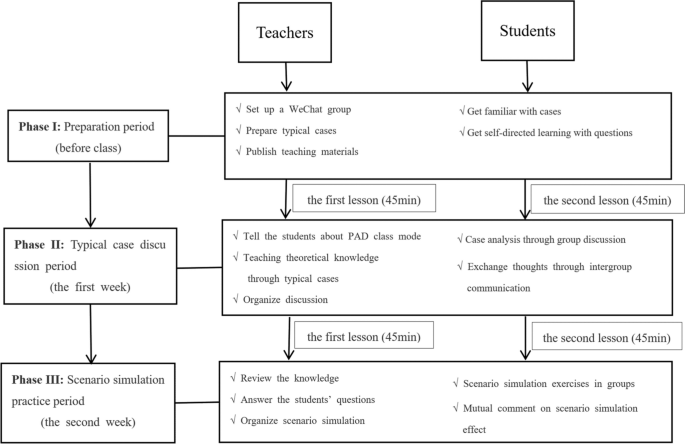
“Typical case discussion and scenario simulation” teaching mode diagram
A demographic questionnaire designed for this purpose was used to collect relevant information from participants, including age, gender, single-child status, family location, experience with typical case discussion or scenario simulation and scores in previous professional courses (Midwifery).
The Critical Thinking Disposition Inventory-Chinese Version (CTDI-CV) was developed by Peng et al. to evaluate the critical thinking ability of midwifery students [ 17 ]. The scale contains 70 items across a total of seven dimensions, namely, open-mindedness, truth-seeking, analytical ability, systematic ability, self-confidence in critical thinking, thirst for knowledge, and cognitive maturity. Each dimension is associated with 10 items, and each item is scored on a 6-point Likert scale, with 1 indicating “extremely agree” and 6 representing “extremely disagree”. The scale includes 30 positive items, which receive scores ranging from “extremely agree” to “extremely disagree” on a scale of 6 to 1, and 40 negative items, which receive scores ranging from “extremely agree” to “extremely disagree” on a scale of 1 to 6. A total score less than 210 indicates negative critical thinking ability, scores between 211 and 279 indicate an unclear meaning, scores of 280 or higher indicate positive critical thinking ability, and scores of 350 or higher indicate strong performance. The score range of each trait is 10–60 points; a score of 30 points or fewer indicates negative trait performance, scores between 31 and 39 points indicate that the trait meaning is incorrect, scores of 40 points or higher indicate positive trait performance, and scores of 50 points or higher indicate extremely positive trait performance. The Cronbach’s α coefficient of the scale was 0.90, thus indicating good content validity and structure. The higher an individual’s score on this measure is, the better that individual’s critical thinking ability.
The evaluation of teaching results was based on a questionnaire used to assess undergraduate course satisfaction, and the researchers deleted and modified items in the questionnaire to suit the context of the “typical case discussion and scenario simulation” teaching mode. Two rounds of discussion were held within the study group to form the final version of the Midwifery Health Assessment satisfaction questionnaire. The questionnaire evaluates the effect of teaching in terms of three dimensions, namely, curriculum content, curriculum teaching and curriculum evaluation. The questionnaire contains 21 items, each of which is scored on a 5-point Likert scale, with 1 indicating “extremely disagree” and 5 representing “extremely agree”. The higher the score is, the better the teaching effect.
Data collection and statistical analysis
We input the survey data into the “Wenjuanxing” platform ( https://www.wjx.cn/ ), which specializes in questionnaire services. At the beginning of the study, an electronic questionnaire was distributed to the students in the control group via student WeChat and QQ groups for data collection. After the intervention, an electronic questionnaire was distributed to the students in the experimental group for data collection in the final class of the Midwifery Health Assessment course. All the data were collected by the first author (Yuji Wang). When students had questions about the survey items, the first author (Yuji Wang) immediately explained the items in detail. To ensure the integrity of the questionnaire, the platform required all the items to be answered before submission.
Statistical Package for Social Sciences Version 26.0 (SPSS 26.0) software was used for data analysis. The Shapiro‒Wilk test was used to test the normality of the data. The measurement data are expressed as the mean ± standard deviation (X ± S), and an independent sample t test was used for comparisons among groups with a normal distribution. The data presented as the number of cases (%), and the chi-square test was performed. A P value < 0.05 indicated that a difference was statistically significant.
Ethical considerations
The study was funded by the New Century Teaching Reform Project of Sichuan University and passed the relevant ethical review. Oral informed consent was obtained from all individual participants in the study.
Characteristics of the participants
A total of 104 third-year midwifery students were enrolled from February 2019 to June 2022, and 98.1% (102/144) of these students completed the survey. Two invalid questionnaires that featured the same answers for each item were eliminated. A total of 100 participants were ultimately included in the analysis. Among the participants, 48 students were assigned to the control group, and 52 students were assigned to the experimental group. The age of the students ranged from 19 to 22 years, and the mean age of the control group was 20.50 years (SD = 0.61). The mean age of the experimental group was 20.63 years (SD = 0.65). Of the 100 students who participated in the study, the majority (96.0%) were women. No significant differences were observed between the intervention and control groups in terms of students’ demographic information (i.e., age, gender, status as an only child, or family location), experience with scenario simulation or typical case discussion and scores in previous Midwifery courses (Table 1 ).
Examining the differences in critical thinking ability between the two groups
The aim of this study was to evaluate the effect of the new teaching mode of “typical case discussion and scenario simulation” on improving the critical thinking ability of midwifery students. Independent sample t tests were used to examine the differences in critical thinking ability between the two groups (Table 2 ). The results showed that the total critical thinking scores obtained by the experimental group were greater than those obtained by the control group (284.81 ± 27.98 and 300.94 ± 31.67, p = 0.008). The differences in four dimensions (Open-Mindedness (40.56 ± 5.60 and 43.59 ± 4.90, p = 0.005), Analyticity (42.83 ± 5.17 and 45.42 ± 5.72, p = 0.020), Systematicity (38.79 ± 4.70 and 41.88 ± 6.11, p = 0.006), and Critical Thinking Self-Confidence (41.35 ± 5.92 and 43.83 ± 5.89, p = 0.039)) were statistically significant.
Examining the differences in curriculum satisfaction between the two groups
To evaluate the effect of the new teaching mode of “the typical case discussion and scenario simulation” on the course satisfaction of midwifery students. Independent sample t tests were used to examine the differences in course satisfaction between the two groups (Table 3 ). The results showed that the curriculum satisfaction of the experimental group was greater than that of the control group (84.81 ± 8.49 and 90.19 ± 8.41, p = 0.002). Independent sample t tests were used to examine the differences in the three dimensions of curriculum satisfaction between the two groups (Table 3 ). The results showed that the average scores of the intervention group on the three dimensions were significantly greater than those of the control group (curricular content: 20.83 ± 1.96 and 22.17 ± 2.23, p = 0.002; curriculum teaching: 34.16 ± 3.89 and 36.59 ± 3.66, p = 0.002; curriculum evaluation: 29.81 ± 3.27 and 31.42 ± 3.19, p = 0.015).
Midwifery is practical and intensive work. To ensure maternal and child safety, midwives must make decisions and take action quickly. Therefore, midwives should have both critical thinking ability and clinical decision-making ability [ 18 ]. In addition, the Australian Nursing and Midwifery Accreditation Council (ANMAC) regulates the educational requirements for the programs required for registration as a midwife. According to these standards, education providers must incorporate learning activities into curricula to encourage the development and application of critical thinking and reflective practice [ 19 ]. Therefore, the challenge of cultivating the critical thinking ability of midwifery students is an urgent problem that must be solved. However, influenced by the traditional teaching method of “teacher-led and content-based”, the critical thinking ability of midwifery students in China is mostly at a medium or low level. In order to improve the critical thinking ability of midwifery students. Our research team has established a new teaching model, the “typical case discussion and scenario simulation” class model. And applied to the midwifery core curriculum Midwifery Health Assessment. This study aimed to investigate the implementation of a novel systematic and structured teaching model for midwifery students and to provide evidence regarding how to improve the critical thinking ability of midwives.
The results showed that the total CTDI-CV score obtained for the experimental group was greater than that obtained for the control group. These findings indicate that the “typical case discussion and scenario simulation” class mode had a positive effect on the cultivation of students’ critical thinking ability, a conclusion which is similar to the findings of Holdsworth et al. [ 20 ], Lapkin et al. [ 21 ] and Demirören M et al. [ 22 ]. We indicate the following reasons that may explain these results.The core aim of the typical case discussion teaching mode is to raise questions based on typical clinical cases and to provide heuristic teaching to students [ 23 ]. This approach emphasizes asking questions based on specific clinical cases, which enables students to engage in targeted learning. Moreover, scenario simulation allows students to attain certain inner experiences and emotions and actively participate in curriculum practice, which can enhance their ability to remember and understand knowledge [ 24 ]. Through the divided class mode, half of the class time was divided into the students. This method emphasizes the guiding role of teachers and encourages and empowers students to assume learning responsibilities. In addition, students can think, communicate and discuss actively [ 22 , 23 ]. Furthermore, this approach created opportunities for students to analyze and consider problems independently and give students sufficient time to internalize and absorb knowledge and deepen their understanding of relevant knowledge, which can increase their confidence in their ability to address such problems and improve their critical thinking ability [ 12 , 25 , 26 ].
In addition, the results showed that except for Truth-Seeking and Systematicity, the other five dimensions were all positive. These findings are similar to the results reported by Atakro et al.. and Sun et al. [ 27 , 28 ]. Through the intervention, the Systematicity scores became positive, suggesting that the new teaching mode can help students deal with problems in an organized and purposeful way. However, Truth-Seeking still did not become positive; this notion focuses on intellectual honesty, i.e., the disposition to be courageous when asking questions and to be honest and objective in the pursuit of knowledge even when the topics under investigation do not support one’s self-interest [ 29 ]. Studies have shown that this factor is related to the traditional teaching mode used [ 30 ]. The traditional teaching mode focuses on knowledge infusion, helps students remember the greatest possible amount of knowledge in a short time, and does not focus on guiding students to seek knowledge with sincerity and objectivity. Therefore, in future educational practice, we should focus on cultivating students’ ability to seek truth and engage in systematization.
Student evaluative feedback is an important way to test the effectiveness teaching mode. Therefore, understanding students’ evaluations of the effects of classroom teaching is key to promoting teaching reform and improving teaching quality. Therefore, we distributed a satisfaction questionnaire pertaining to the midwifery health assessment curriculum, which was based on the “typical case discussion and scenario simulation” class mode, with the goal of investigating curriculum satisfaction in terms of three dimensions (curriculum content, curriculum teaching and curriculum evaluation). The results showed that the satisfaction scores for each dimension increased significantly. This finding suggests that the new teaching method can enrich the teaching content, diversify the teaching mode and improve students’ curriculum evaluations.
In summary, the “typical case discussion and scenario simulation” class mode focuses on typical cases as its main content. Students’ understanding of this content is deepened through group discussion and scenario simulation. The subjectivity of students in curriculum learning should be accounted for. Students can be encouraged to detect, analyze and solve problems with the goal of improving their critical thinking ability. Moreover, this approach can also enhance curriculum satisfaction. It is recommended that these tools should be used continuously in future curriculum teaching.
This study has several limitations. First, the representativeness of the sample may be limited since the participants were recruited from specific universities in China. Second, we used historical controls, which are less effective than simultaneous controlled trials. Third, online self-report surveys are susceptible to response biases, although we included quality control measurements in the process of data collection. Fourth, we did not use the same critical thinking instrument, CTDI-CV, to investigate the critical thinking of the students in the experimental group or the control group before intervention but used professional course grades from the Midwifery for substitution comparison. This may not be a sufficient substitute. However, these comparisons could be helpful since those grades included some sort of evaluation of critical thinking. In light of these limitations, future multicenter simultaneous controlled studies should be conducted. Nonetheless, this study also has several strengths. First, no adjustment of teachers or change in learning materials occurred since the start of the midwifery health assessment, thus ensuring that the experimental and control groups featured the same teaching materials, teachers and teaching hours. In addition, to ensure the quality of the research, the first author of this paper participated in the entirety of the course teaching.
The “typical case discussion and scenario simulation” class mode can improve the critical thinking of midwifery students, which is helpful for ensuring maternal and child safety. Students are highly satisfied with the new teaching mode, and this approach has a certain degree of promotional significance. However, this approach also entails higher requirements for both teachers and students.
Availability of data and materials
The datasets used and/or analyzed during the current study are available from the corresponding author on reasonable request.
World Health Organisation, Strengthening quality midwifery education for Universal Health Coverage2030,2019, https://www.who.int/maternal_child_adolescent/topics/quality-of-care/midwifery/strengthening-midwifery-education/en/ (accessed 21.01.20).
Akombi BJ, Renzaho AM. Perinatal mortality in Sub-Saharan Africa: a meta-analysis of demographic and health surveys. Ann Glob Health. 2019;85(1):106.
Article Google Scholar
Campbell OM, Graham WJ. Strategies for reducing maternal mortality: getting on with what works. Lancet. 2006;368(9543):1284–99.
Gage AD, Carnes F, Blossom J, Aluvaala J, Amatya A, Mahat K, Malata A, Roder-DeWan S, Twum-Danso N, Yahya T, et al. In low- and middle-income countries, is delivery in high-quality obstetric facilities geographically feasible? Health Aff (Millwood). 2019;38(9):1576–84.
Xing C, Zhou Y, Li M, Wu Q, Zhou Q, Wang Q, Liu X. The effects of CPBL + SBAR teaching mode among the nursing students. Nurse Educ Today. 2021;100:104828.
Carter AG, Creedy DK, Sidebotham M. Critical thinking evaluation in reflective writing: development and testing of Carter assessment of critical thinking in midwifery (Reflection). Midwifery. 2017;54:73–80.
Yeh SL, Lin CT, Wang LH, Lin CC, Ma CT, Han CY. The Outcomes of an Interprofessional simulation program for new graduate nurses. Int J Environ Res Public Health. 2022;19(21):13839.
Chang MJ, Chang YJ, Kuo SH, Yang YH, Chou FH. Relationships between critical thinking ability and nursing competence in clinical nurses. J Clin Nurs. 2011;20(21–22):3224–32.
Shoulders B, Follett C, Eason J. Enhancing critical thinking in clinical practice: implications for critical and acute care nurses. Dimens Crit Care Nurs. 2014;33(4):207–14.
Jalalpour H, Jahani S, Asadizaker M, Sharhani A, Heybar H. The impact of critical thinking training using critical thinking cards on clinical decision-making of CCU nurses. J Family Med Prim Care. 2021;10(10):3650–6.
Xuexin Z. PAD class: a new attempt in university teaching reform. Fudan Educ Forum. 2014;12(5):5–10 [in Chinese].
Google Scholar
Zhai J, Dai L, Peng C, Dong B, Jia Y, Yang C. Application of the presentation-assimilation-discussion class in oral pathology teaching. J Dent Educ. 2022;86(1):4–11.
Colliver JA. Effectiveness of problem-based learning curricula: research and theory. Acad Med. 2000;75(3):259–66.
Bryant K, Aebersold ML, Jeffries PR, Kardong-Edgren S. Innovations in simulation: nursing leaders’ exchange of best practices. Clin Simul Nurs. 2020;41:33-40.e31.
Cicero MX, Whitfill T, Walsh B, Diaz MC, Arteaga G, Scherzer DJ, Goldberg S, Madhok M, Bowen A, Paesano G, et al. 60 seconds to survival: a multisite study of a screen-based simulation to improve prehospital providers disaster triage skills. AEM Educ Train. 2018;2(2):100–6.
Lee J, Lee H, Kim S, Choi M, Ko IS, Bae J, Kim SH. Debriefing methods and learning outcomes in simulation nursing education: a systematic review and meta-analysis. Nurse Educ Today. 2020;87:104345.
Peng G, Wang J, Chen M, Chen H, Bai S, Li J, Li Y, Cai J, Wang L. Yin Validity and reliability of the Chinese critical thinking disposition inventory Chin. J Nurs. 2004;39(09):7–10 [in Chinese].
Papathanasiou IV, Kleisiaris CF, Fradelos EC, Kakou K, Kourkouta L. Critical thinking: the development of an essential skill for nursing students. Acta Inform Med. 2014;22(4):283–6.
Australian Nursing and Midwifery Accreditation Council Midwife accreditation standards, 2014 ANMAC, Canberra. 2014. https://anmac.org.au/document/midwife-accreditation-standards-2014 .
Holdsworth C, Skinner EH, Delany CM. Using simulation pedagogy to teach clinical education skills: a randomized trial. Physiother Theory Pract. 2016;32(4):284–95.
Lapkin S, Fernandez R, Levett-Jones T, Bellchambers H. The effectiveness of using human patient simulation manikins in the teaching of clinical reasoning skills to undergraduate nursing students: a systematic review. JBI Libr Syst Rev. 2010;8(16):661–94.
Demirören M, Turan S, Öztuna D. Medical students’ self-efficacy in problem-based learning and its relationship with self-regulated learning. Med Educ Online. 2016;21:30049.
Spaulding WB, Neufeld VR. Regionalization of medical education at McMaster University. Br Med J. 1973;3(5871):95–8.
Rossler KL, Kimble LP. Capturing readiness to learn and collaboration as explored with an interprofessional simulation scenario: A mixed-methods research study. Nurse Educ Today. 2016;36:348–53.
Yang YL, Luo L, Qian Y, Yang F. Cultivation of undergraduates’ self-regulated learning ability in medical genetics based on PAD class. Yi Chuan. 2020;42(11):1133–9.
Felton A, Wright N. Simulation in mental health nurse education: the development, implementation and evaluation of an educational innovation. Nurse Educ Pract. 2017;26:46–52.
Atakro CA, Armah E, Menlah A, Garti I, Addo SB, Adatara P, Boni GS. Clinical placement experiences by undergraduate nursing students in selected teaching hospitals in Ghana. BMC Nurs. 2019;18:1.
Sun Y, Yin Y, Wang J, Ding Z, Wang D, Zhang Y, Zhang J, Wang Y. Critical thinking abilities among newly graduated nurses: a cross-sectional survey study in China. Nurs Open. 2023;10(3):1383–92.
Wangensteen S, Johansson IS, Björkström ME, Nordström G. Critical thinking dispositions among newly graduated nurses. J Adv Nurs. 2010;66(10):2170–81.
Salsali M, Tajvidi M, Ghiyasvandian S. Critical thinking dispositions of nursing students in Asian and non-Asian countries: a literature review. Glob J Health Sci. 2013;5(6):172–8.
Download references
Acknowledgements
Not applicable.
The study was supported by Sichuan University’s New Century Education and Teaching Reform Project (SCU9316).
Author information
Yuji Wang and Yijuan Peng are co-first authors.
Authors and Affiliations
Department of Nursing, West China Second University Hospital, Sichuan University/West China School of Nursing, Sichuan University/Key Laboratory of Birth Defects and Related Diseases of Women and Children (Sichuan University), No. 20 Third Section, Renmin South Road, Chengdu, Sichuan Province, 610041, China
Yuji Wang, Yijuan Peng & Yan Huang
You can also search for this author in PubMed Google Scholar
Contributions
All authors contributed to the study conception and design. Material preparation, data collection and analysis were performed by Yuji Wang, Yijuan Peng and Yan Huang. The first draft of the manuscript were written by Yuji Wang and Yijuan Peng, and all authors commented on previous versions of the manuscript.
Corresponding author
Correspondence to Yan Huang .
Ethics declarations
Ethics approval and consent to participate.
This study was supported by Sichuan University. And it was approved by the Ethics Review Committee of West China School of Nursing, Sichuan University. As it is a teaching research with no harm to samples, we only obtained oral informed consents from the participants including teachers and midwifery students and it was approved by the Ethics Review Committee of West China School of Nursing, Sichuan University(approval number 2021220). We comfirm that all methods were performed in accordance with the relevant guidelines and regulations in Ethics Approval and Consent to participate in Declarations.
Consent for publication
Competing interests.
The authors declare no competing interests.
Additional information
Publisher’s note.
Springer Nature remains neutral with regard to jurisdictional claims in published maps and institutional affiliations.
Rights and permissions
Open Access This article is licensed under a Creative Commons Attribution 4.0 International License, which permits use, sharing, adaptation, distribution and reproduction in any medium or format, as long as you give appropriate credit to the original author(s) and the source, provide a link to the Creative Commons licence, and indicate if changes were made. The images or other third party material in this article are included in the article's Creative Commons licence, unless indicated otherwise in a credit line to the material. If material is not included in the article's Creative Commons licence and your intended use is not permitted by statutory regulation or exceeds the permitted use, you will need to obtain permission directly from the copyright holder. To view a copy of this licence, visit http://creativecommons.org/licenses/by/4.0/ . The Creative Commons Public Domain Dedication waiver ( http://creativecommons.org/publicdomain/zero/1.0/ ) applies to the data made available in this article, unless otherwise stated in a credit line to the data.
Reprints and permissions
About this article
Cite this article.
Wang, Y., Peng, Y. & Huang, Y. The effect of “typical case discussion and scenario simulation” on the critical thinking of midwifery students: Evidence from China. BMC Med Educ 24 , 340 (2024). https://doi.org/10.1186/s12909-024-05127-5
Download citation
Received : 19 November 2022
Accepted : 02 February 2024
Published : 26 March 2024
DOI : https://doi.org/10.1186/s12909-024-05127-5
Share this article
Anyone you share the following link with will be able to read this content:
Sorry, a shareable link is not currently available for this article.
Provided by the Springer Nature SharedIt content-sharing initiative
- Medical education
- Critical thinking
- Nurse midwives
BMC Medical Education
ISSN: 1472-6920
- Submission enquiries: [email protected]
- General enquiries: [email protected]

IMAGES
VIDEO
COMMENTS
The benefits of literature are legion. Reading improves vocabulary, organizational skills, and the ability to read, comprehend, and analyze text. Plus, it can provide people with important historical perspective, encourage sympathy for other human beings, and promote appreciation for diversity and understanding of other cultures.
The Case for Reading Fiction. by. Christine Seifert. March 06, 2020. cintascotch/Getty Images. Summary. When it comes to reading, we may be assuming that reading for knowledge is the best reason ...
Critical Thinking is an Extension of Critical Reading. Thinking critically, in the academic sense, involves being open-minded - using judgement and discipline to process what you are learning about without letting your personal bias or opinion detract from the arguments. Critical thinking involves being rational and aware of your own feelings ...
Constructive feedback is essential for students to improve their critical thinking skills. When providing feedback, consider the following guidelines: Be specific and focused on the critical thinking aspects of students' work; Link feedback directly to the established goals and criteria; Encourage self-assessment and reflection
Critical reading does not have to be all negative. The aim of critical reading is not to find fault but to assess the strength of the evidence and the argument. It is just as useful to conclude that a study, or an article, presents very strong evidence and a well-reasoned argument, as it is to identify the studies or articles that are weak.
How Reading Improves Critical Thinking; Reading for Critical Thinking. Critical thinking is an important skill for children to develop as they grow. Good critical thinking skills can be attained in a variety of ways. Reading mystery books is one way; books supply a landscape in which children can develop critical thinking skills simply by ...
In addition to improving critical thinking skills, reading has a range of other benefits for personal growth. It can help to reduce stress and anxiety, improve empathy and creativity, and increase self-awareness. Reading also provides us with a sense of connection to others and helps to broaden our perspectives of the world.
Significantly, reading develops the critical thinking skills that are essential to success in a wide range of areas: skills of analysis, interpretation, and of being able to create an argument and explain it. ... Take a look at some of the ways wide reading can develop your critical thinking: Reading improves vocabulary and language skills. You ...
a serious mind. Critical thinking is one of the factors that children need to understand reading. Children need critical thinking in analyzing, dissecting, classifying, distinguishing, matching, and taking the meaning implied in the reading. The role of critical thinking is important in understanding reading when a child is faced with a
Use this checklist to practice critical thinking while reading an article, watching an advertisement, or making an important purchase or voting decision. Critical Reading Checklist (Word) Critical Reading Checklist (PDF) Critical Thinking Bookmark (PDF) Learn about the ways that active reading instead of passive reading is the key to growing ...
The Bundle of Skills We Call Reading. Most of the things we call "skills" are in fact big bundles of smaller skills. For example, to be a highly-skilled basketball player means that you have developed the following abilities: Spatial awareness, Hand-eye coordination, Vertical leap, Foot speed, Agility, Dribbling, Shooting, Rebounding ...
But it is so important that we help our students transition at the same time to thinking while reading, while doing math or writing. The old saying "K-3 is learning to read, but 4-6 is reading to learn" identifies that critical moment when the critical thinking has been activated.
If you want to possess critical reading skills, you shouldn't count on memorizing the concepts you've read, especially if a larger piece of work is in question. There are many tools you can use to annotate effectively, like: Post-it notes. Highlighters. Scribbling down your ideas or opinions while you read.
It takes 5-10 minutes to get into reading. We can then read comfortably and at peak performance for about 40-60 minutes. After that, our minds start to wander and we need a break. Take a break for 5-10 minutes to rest your eyes and stretch. Shake out your body and rest your brain for a few minutes.
When reading and analysing a source closely, use our set of critical thinking questions (PDF) to help you engage critically. Spreeder is an online tool useful for skim-reading text whilst still gaining an understanding of the context. You can adjust the number of words presented and reading speed of your text, helping you to improve your ...
This study found that for readers, reading experiences were connected with ways of thinking critically. Reading both fiction and nonfiction was described as broadening minds and shifting modes of thinking, and prompting critical thought in a diverse range of ways. Fiction had unique associations with different ways of changes one's thinking ...
Critical thinking has been identified as an essential skill for the 21st century, yet little research has investigated its role in reading comprehension. Executive functions (EF) and critical thinking overlap, where the latter often rely on the proficient operation of EF and vice versa. Extending the simple view of reading, the active view of reading considers the contribution of language ...
With that being said, reading can also improve critical thinking. Reading is a fundamental skill, especially when it pertains to gaining insight on other skills, such as critical thinking. With reading, you as an author or reader have arrays of diverse perspectives on life and different morals regarding specific situations.
The main purpose of the present research was to design a reading comprehension strategy to improve critical thinking skills in tenth grade students at "Simon Plata Torres" Senior School in Esmeraldas. It was a combining qualitative and quantitative approaches, that relies on the principle of complementarity.
The results indicated that the integration of critical thinking both improved students' critical thinking skills as well as language proficiency. Another finding was that the practice of critical thinking made learning motivating to students because of the authenticity of materials and supporting learning environment.
6. Ask lots of open-ended questions. Curiosity is a key trait of critical thinkers, so channel your inner child and ask lots of "who," "what," and "why" questions. 7. Find your own reputable ...
Whether you've just gotten into reading, or you're churning through multiple books a week, here's some tips to keep in mind as you're setting your reading goals.
Helps Develop Critical Thinking Skills. Reading can also help you to develop your critical thinking skills, which can help to make you a stronger writer. As you read a novel, you might think critically about a number of things about the book, including the characters' motives, what is happening in the plot, themes, symbolism, and subtext the ...
Reading is an essential component of developing advanced literacy skills, including writing and critical thinking. Reading improves vocabulary, grammar, and overall comprehension. Additionally, reading enhances analytical skills, interpretation, and even empathy towards others. Through consistent reading, individuals can develop a deeper ...
Middle and high school math teachers can use these ideas to build students' reading comprehension and reasoning skills using real tasks like budgeting. ... but also they will be able to use critical thinking skills to combine math, vocabulary, and everyday life to further their understanding. ... and consequently improve math scores and ...
In order to improve the critical thinking ability of midwifery students. Our research team has established a new teaching model, the "typical case discussion and scenario simulation" class model. And applied to the midwifery core curriculum Midwifery Health Assessment. This study aimed to investigate the implementation of a novel systematic ...